Southern Cross wildlife Care - Critters of the Month: 2016
By Lynleigh and Kayleigh Greig
Critter of the Month - January 2016
Our Christmas Wish 2015
Bin It - Cats in After Dark - Drive to Keep Them Alive - Don't Remove Their Home to Improve Yours
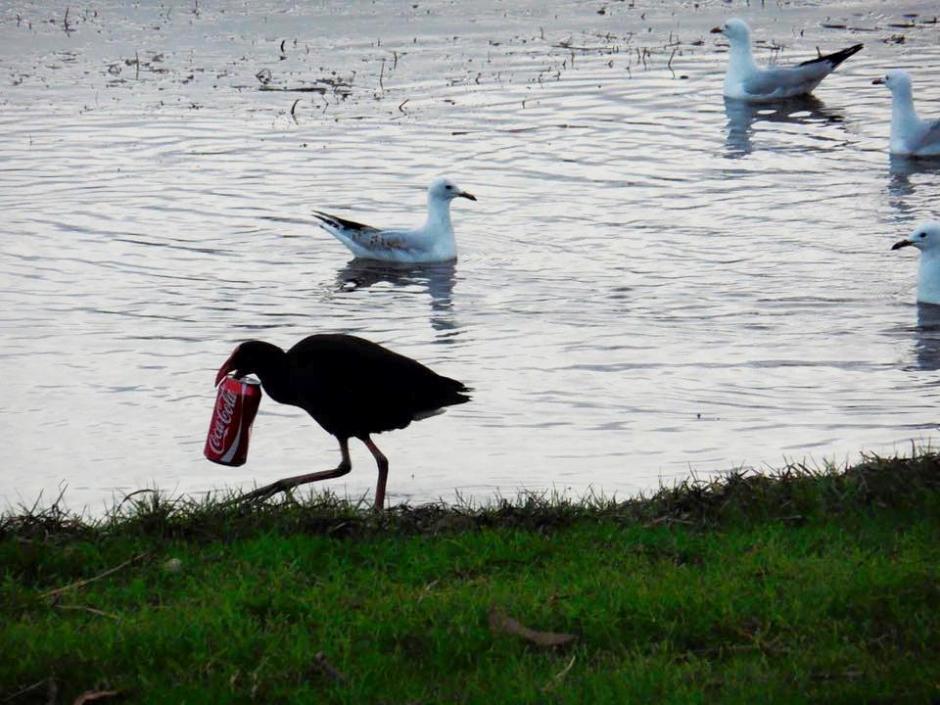
SCWC Volunteer Lynleigh Grieg spent hours wading through litter and garbage to try and capture this poor swamp hen with a discarded soft-drink can stuck to its mandible
Our Christmas Wish
It's been a month of sad little patients being brought in with injuries and afflictions that were all caused by human irresponsibility....
Littering. Our volunteers spent days searching for a poor swamp-hen that had a Coke-can stuck to its mandible which meant it couldn't eat.
Irresponsible Pet ownership. Our volunteers spent hours nursing baby animals back to health after they became victims of cats wandering about at night.
Bad driving. Our volunteers have dragged the limp bodies of dead or dying wallabies off the roads after they were struck by vehicles.
Thoughtlessness. Our volunteers have been swamped with injured birds and homeless possums after their trees were cut down without a thought for the destruction of their homes.
With Christmas coming up, our wish is for humans to start living responsibly. Here are a few ways you can start:
Bin It
Eating, drinking, picnicking - we all love to do it! Especially in beautiful areas such as the park, the beach and the lake-side. But those areas won't stay beautiful for long if we just toss our garbage on the ground or into the water. This confronting image should be enough to make us all want to clean up our act:
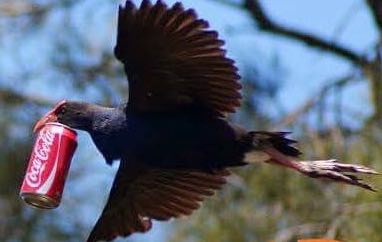
Swamp hen wearing litter... Photo by Andrea Louisa Glazier.
If you're fishing, make sure you take all your fishing hooks and line with you. Many of our sea-birds get horribly entangled in fishing line or swallow fish-hooks that have not been properly discarded.
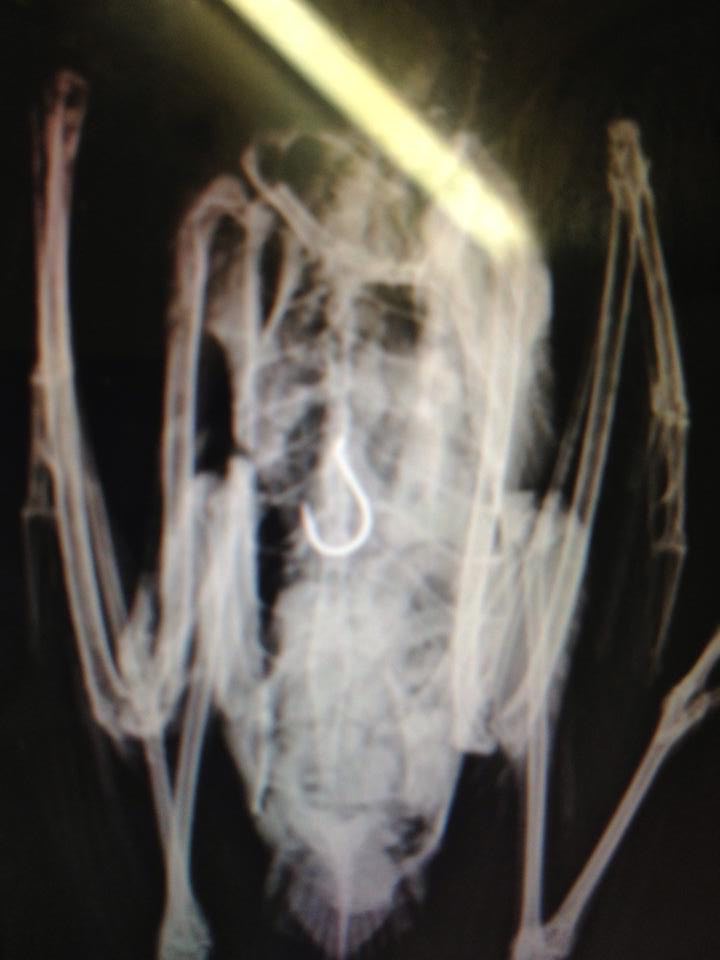
Radiography of a sea-gull that has ingested a discarded fish-hook.
Cats in After Dark
Be a good owner and do the right thing - for your pet and for our wildlife. You may not like to think of your fur-baby as a killer, but they certainly do a lot of damage to our nocturnal wildlife. A cat's saliva is a lot like venom to many of our little native animals and without treatment, they will die within hours of being in kitty's mouth. Similarly, there are dangers after dark for your cat. Every day I see at least one that has been a victim to car-strike. There are also pythons, powerful owls and foxes out there that pose a threat to a wondering kitty-cat. If you love them, keep them indoors - particularly at night.
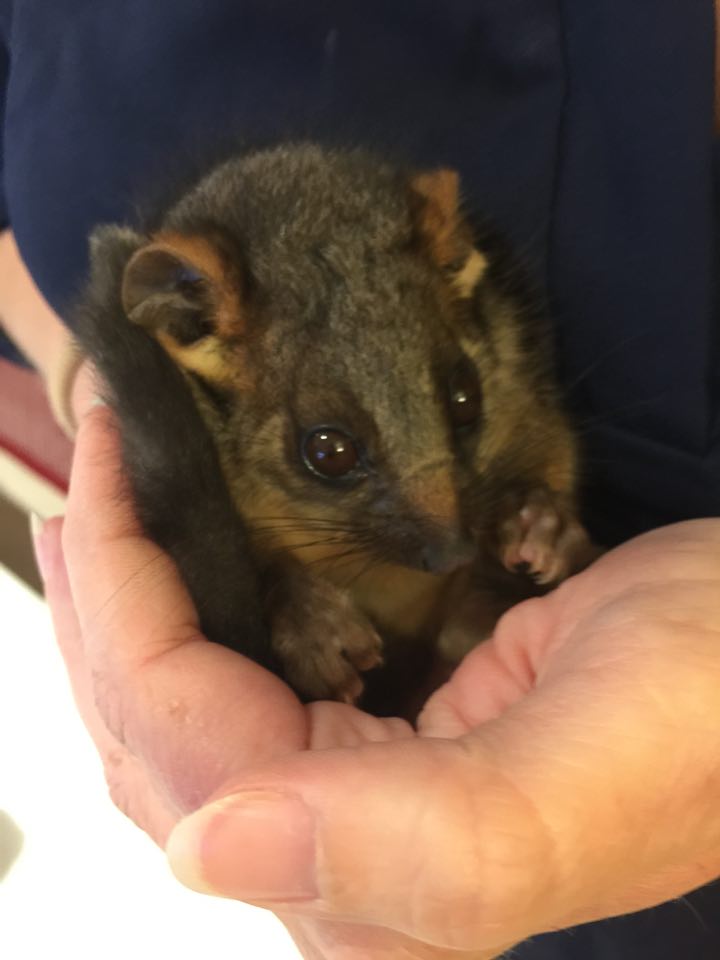
Baby ringtail, baby swamp snake and baby bandicoot - all victims of cat-attack.
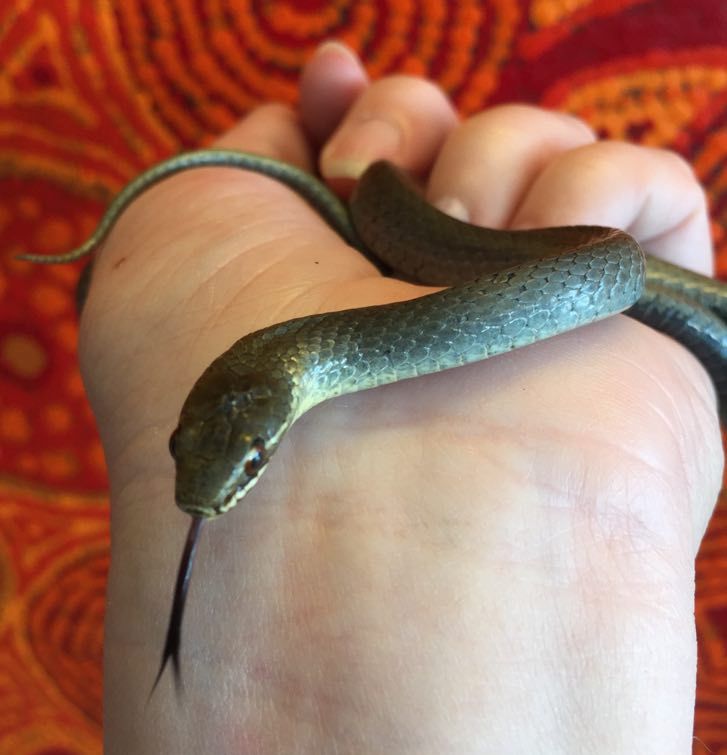
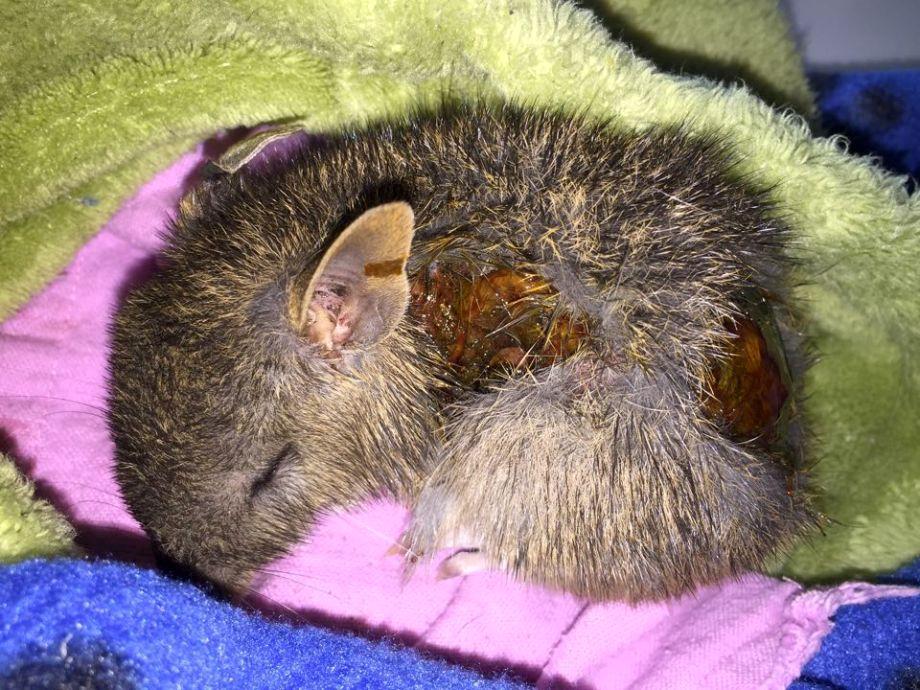
Drive to Keep Them Alive
Driving at night means that you are more likely to encounter our nocturnal wildlife. Between dusk and dawn, slow down and stay alert. If there is no oncoming traffic, use your brights to keep an eye on the road ahead. If you do happen to hit an animal, contact your local Wildlife Rescue Organisation immediately. If you hit a marsupial, stop to check its pouch for joeys - they can still survive even if the mother is killed.
Wildlife Roadkill statistics show that 727 wallabies were killed on the Wakehurst Parkway since 2010! That's just on one road!!! Our wallaby populations can't sustain that kind of loss year on year.
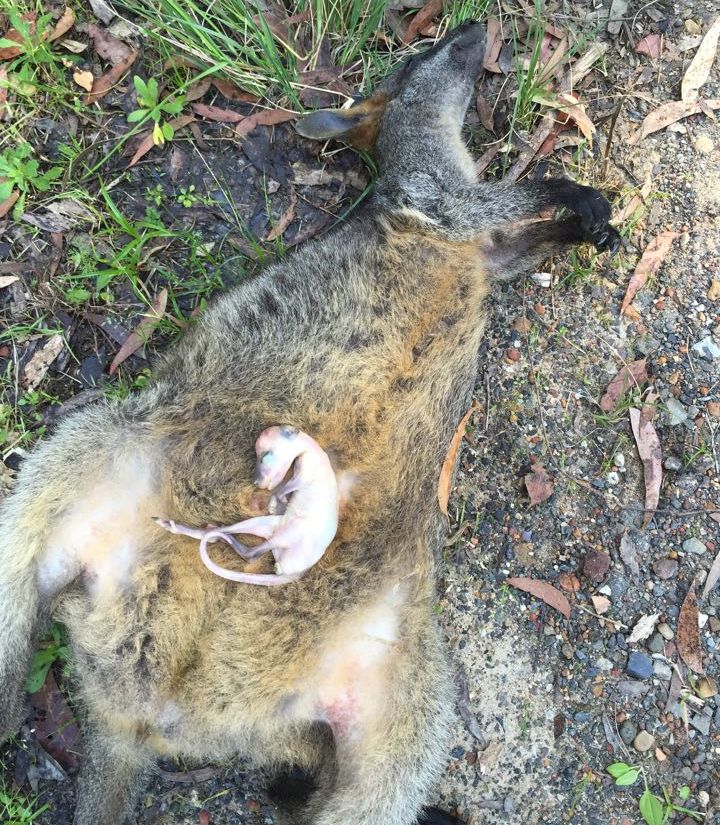
Mama wallaby and her joey hit on the Wakehurst Parkway.
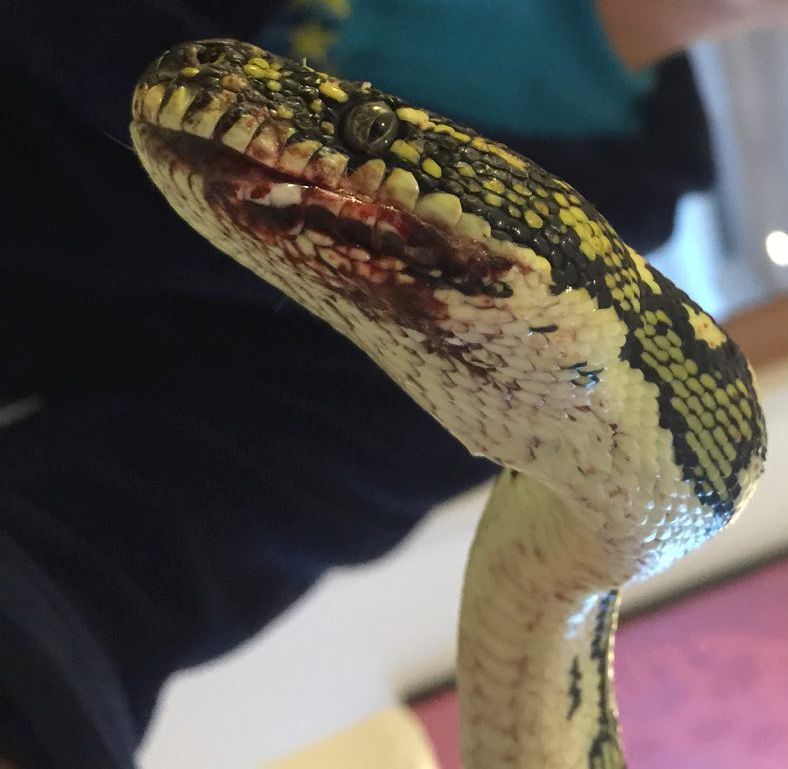
Python smashed on road
Don't Remove Their Home to Improve Yours
Everyone wants good views and minimal leaf-litter in their yards these days. This seems to equate to tearing down every tree in sight. What people need to remember is that trees are more than just trees - they are homes to many little creatures such as birds, sugar-gliders, micro-bats and possums. When their home is torn down they need to find alternate accommodation which puts them in danger. They have to cross roads into other animals' territories and sometimes they will try to make a new home in your roof! Trees are beautiful in their own right. Enjoy them as part of the view and respect the homes of all critters.
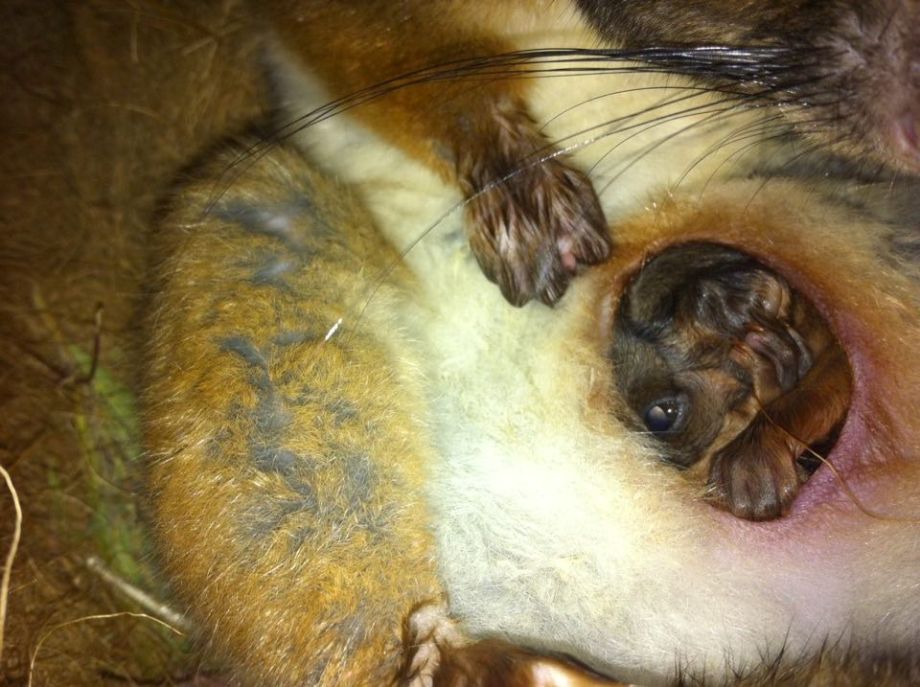
Possum mum and twin babies lost their home when their tree was torn down for better views.
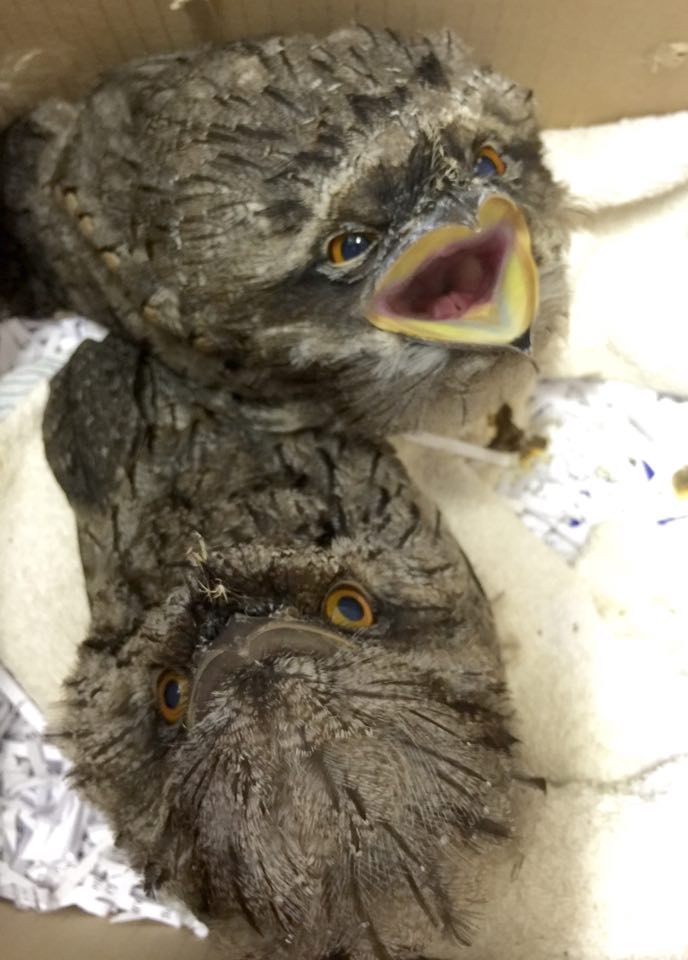
Baby tawny frogmouths - home tree chopped down
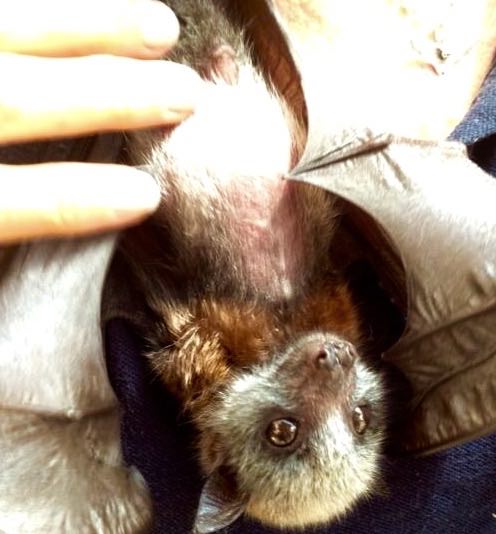
Homeless flying fox pup - roosting trees 'pruned'...
If you follow these simple rules, you will be saving our wildlife for Christmas this year and for many more Christmasses in the future.
Be responsible, be safe and be a good human.
Merry Christmas and have a wonderful and wild 2016!!!
From the team at Southern Cross Wildlife Care
Critter of the Month - February 2016
No to Netting!
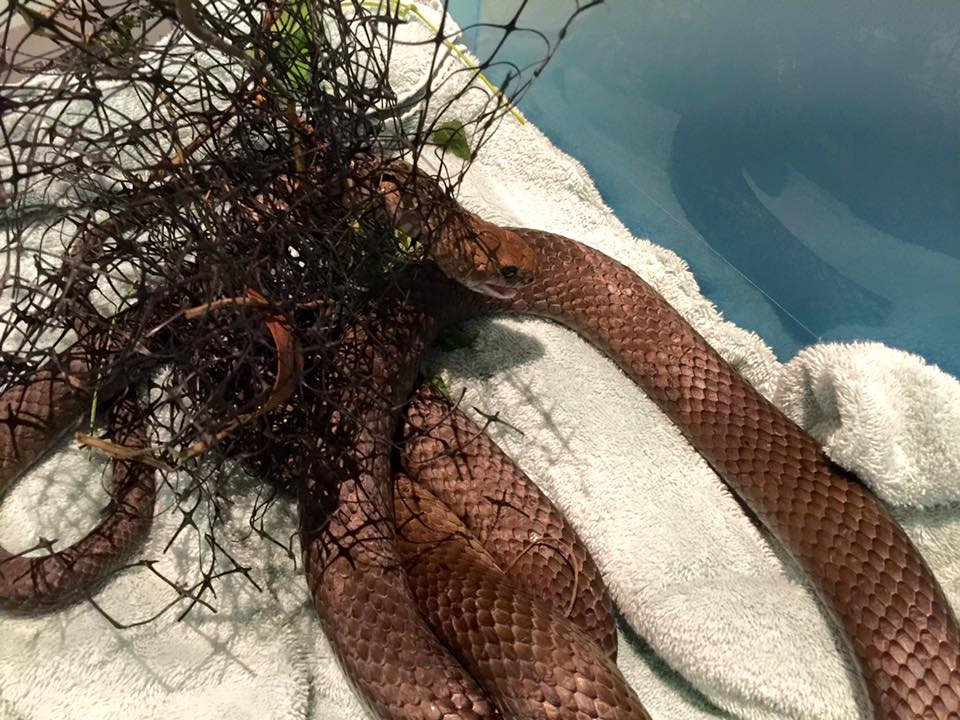
People use netting to protect their fruit and vegetables from possums and birds. Right? Well, did you know that it’s not a deterrent, it’s a trap? And this vile trap doesn’t discriminate between victims… It incarcerates possums, birds, flying foxes, lizards… AND… snakes!
Vladimir is our latest patient. Vladimir is a rather large, rather handsome and somewhat venomous eastern brown snake. On Monday night, Vladimir was just doing border patrol, undertaking his very important task of pest extermination. He had detected the scent of a rat and was in search of the critter. The rat was caught and struggling in plastic netting. Vladimir pounced. But both he and his prey became victims of the cruel man-made trap.
Panic set in as he was unable to back out of the grasp of the black tentacles. He thrashed around frantically in a bid to extricate himself but the plastic cut deeper and deeper into his flesh. Eventually he was so ensnared that his blood circulation became constricted. Poor Vladimir stopped struggling and accepted the fate that awaited him. The rat had already succumbed to its demise…
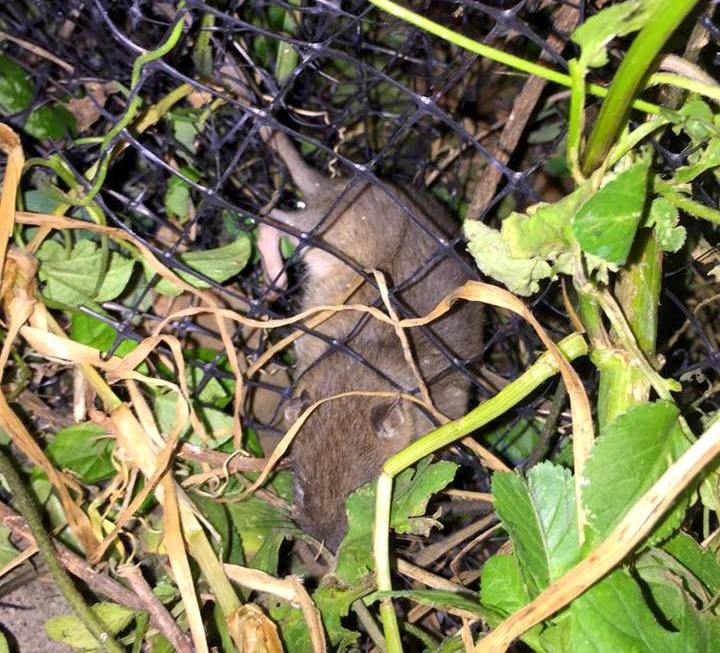
Thankfully, the property-owners happened to be pottering around in the backyard and noticed Vlad's 2 metre-long brown body lying limp and motionless in the netting. They immediately called for help.
We arrived on the scene just as darkness fell. Always a wonderful time to undertake a venomous snake rescue…
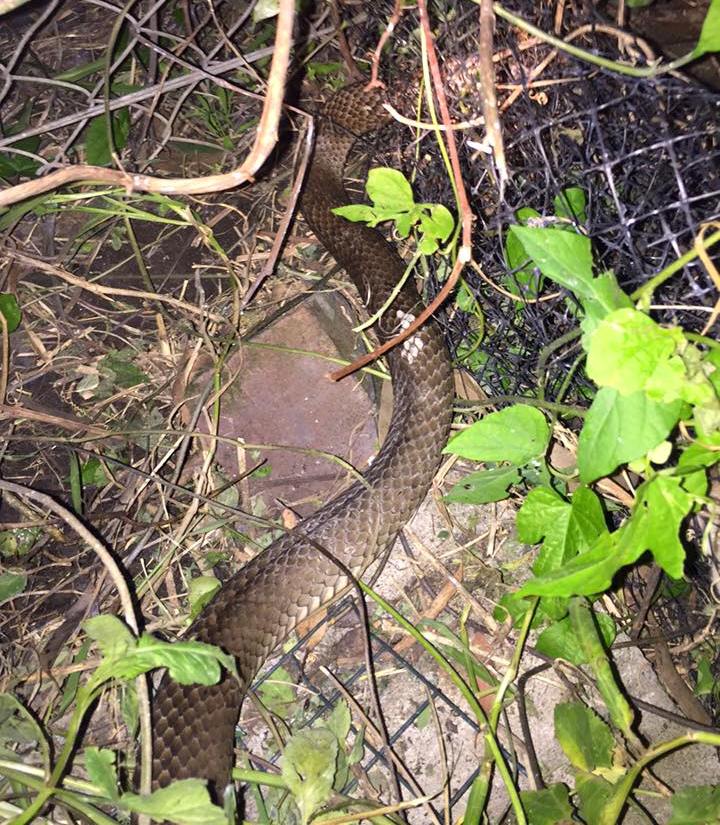
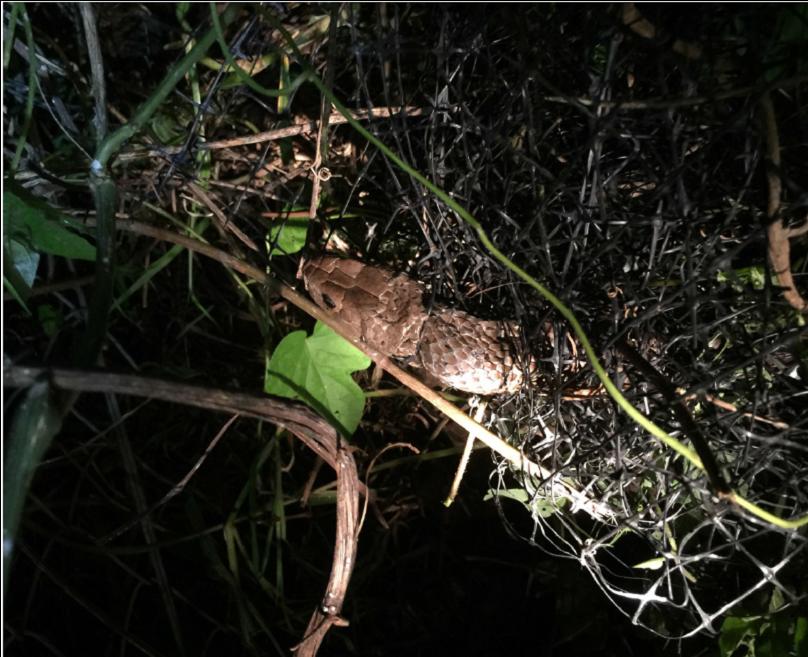
Armed with a pair of scissors and a head-torch, Operation Brown Snake Rescue began. The important thing was to get the patient out of immediate danger. In this case it was removing him from the roll of netting which was staked into the ground. The rest of the rescue would have to take place in a well-lit surgery to ensure maximum safety for the patient and the rescuers. Vlad was given immediate pain-relief and removed from the property, wrapped in a warm towel and secured in a locked box.
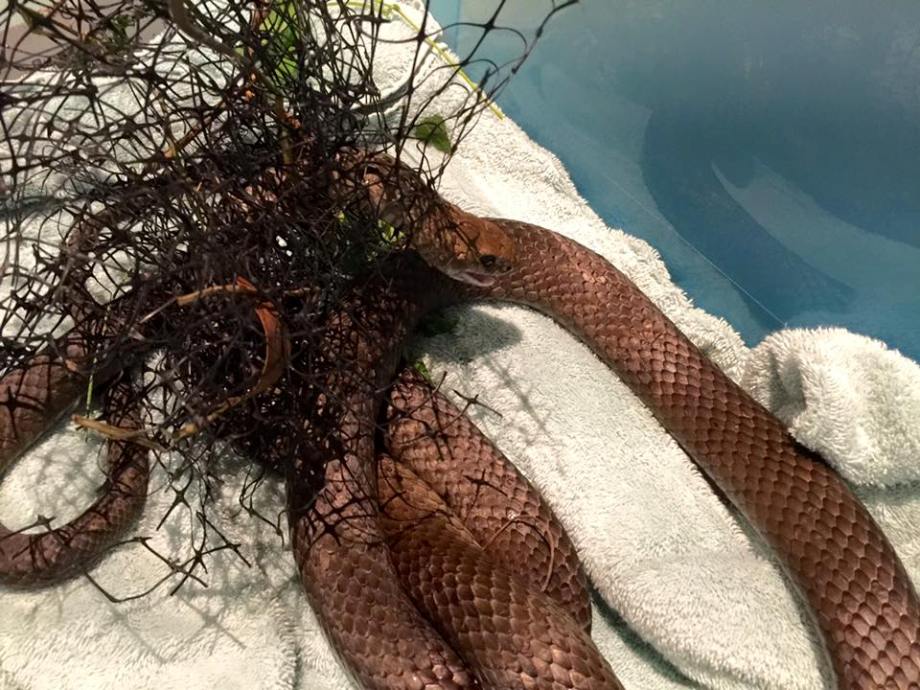
Can you imagine how scary this was for Vlad? He couldn’t move his head without making the netting constrict tighter and tighter. He was gasping for breath by the time we got to work on cutting the netting off his neck. It took around an hour. As we removed pieces, we advanced the plastic tube over his head to ensure the safety of the snake and the rescuers. The plastic tubes are a wonder as they are completely non-invasive and 100% safe.
How much more relaxed does Vlad look in this picture?
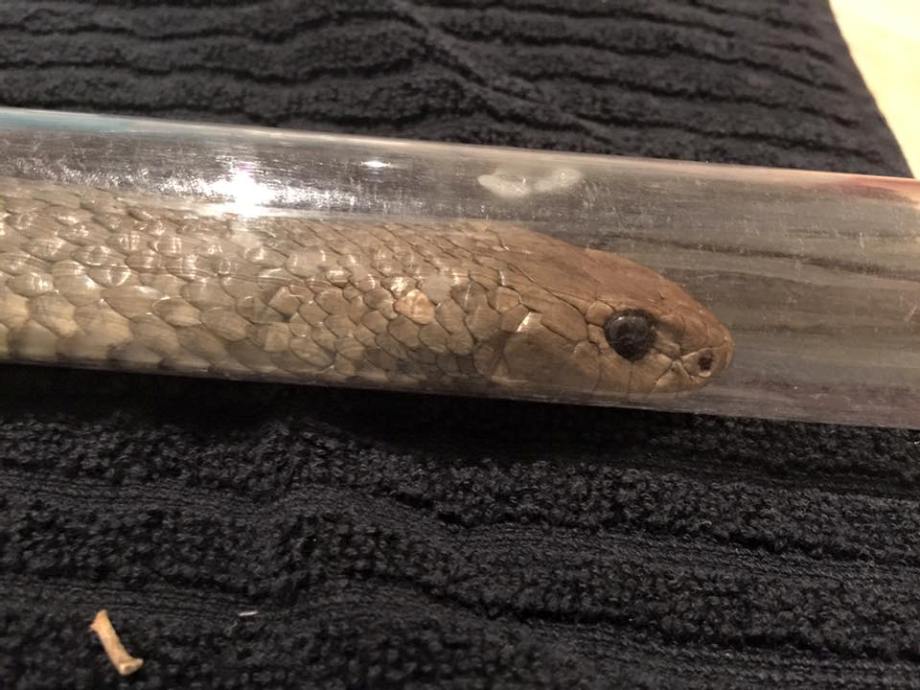
This photo clearly shows the lacerations which Vladimir sustained as a result of the netting slicing into his flesh. We made sure to thoroughly clean up his wounds, administer antibiotics and subcutaneous fluids and injected some anti-inflammatories.
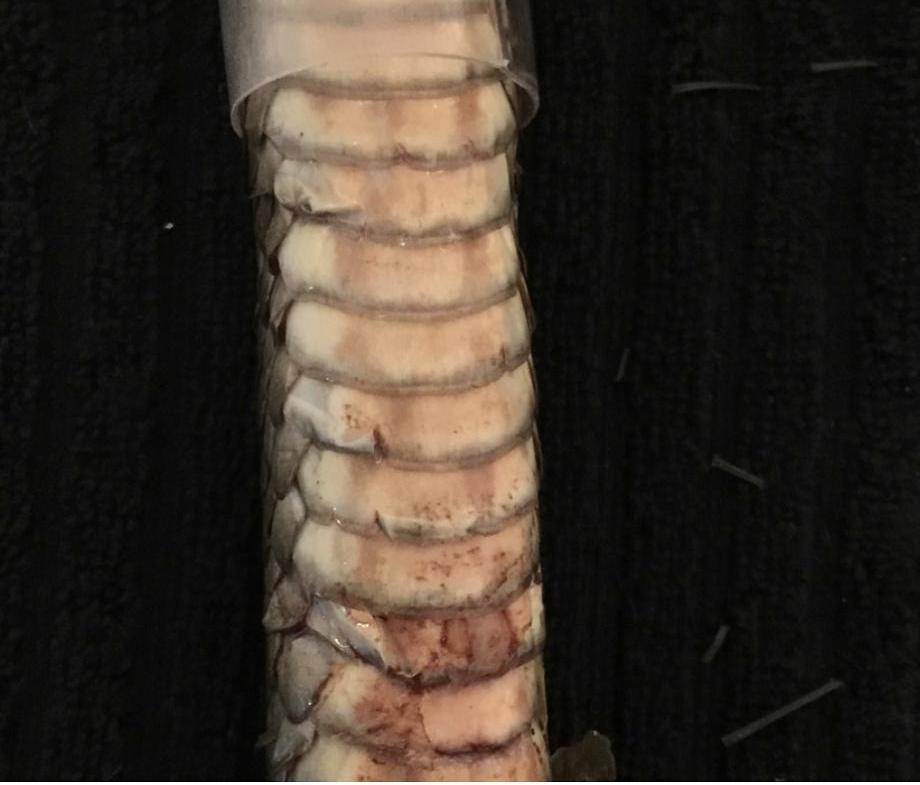
A much happier patient. He was popped onto a warm heat-mat and snuggled into some soft towels overnight.
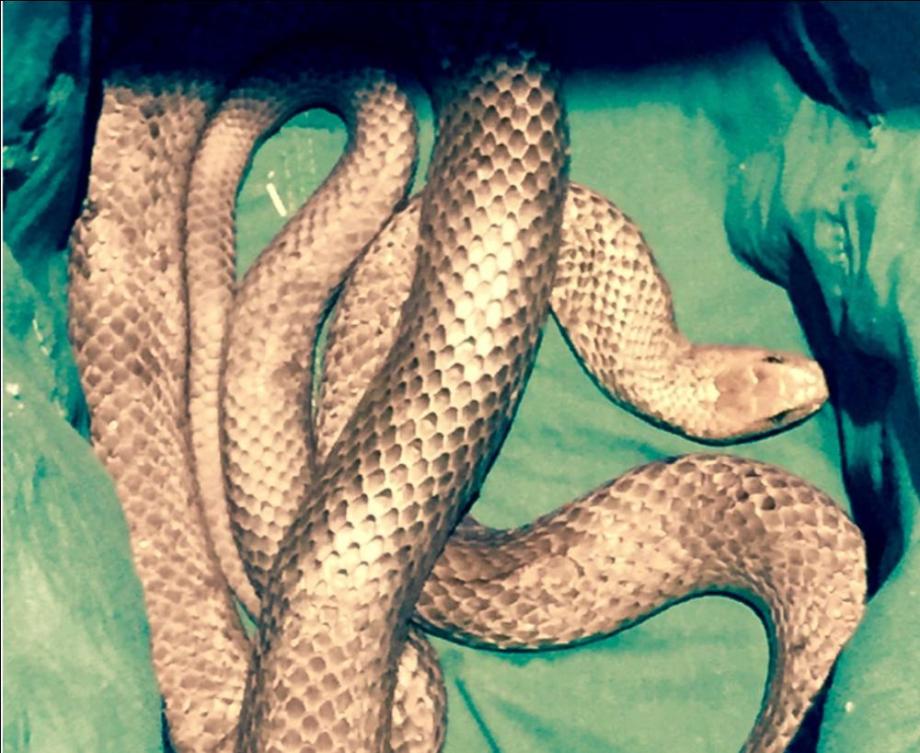
Vlad has spent a few of days in care for observation. Constrictive injuries need to be closely monitored, but luckily he showed no signs of tissue death or swelling so he will be released over the weekend.
We would highly recommend using wildlife-friendly netting. It is soft and stretchy and is quite tightly-woven, like pantyhose - to ensure that little heads, beaks, claws can’t permeate them.
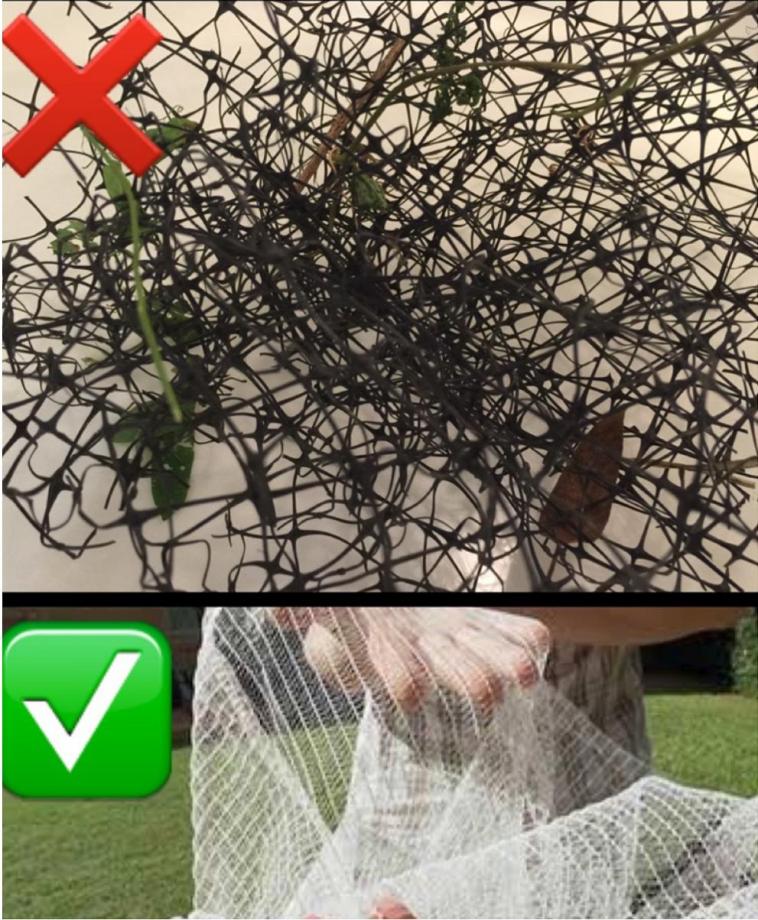
By Lynleigh Greig
Southern Cross Wildlife Care
Critter of the Month - March 2016
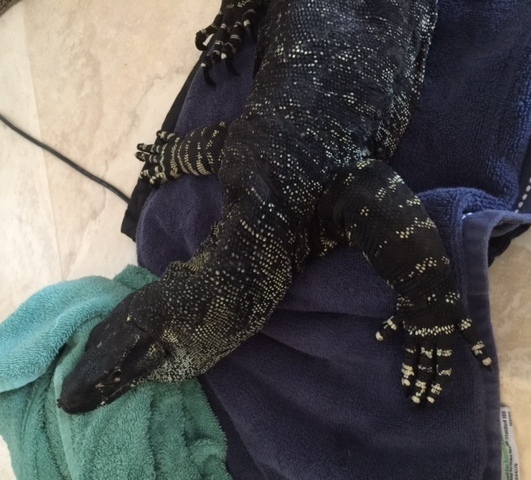
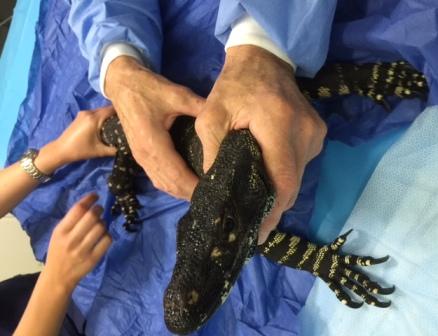
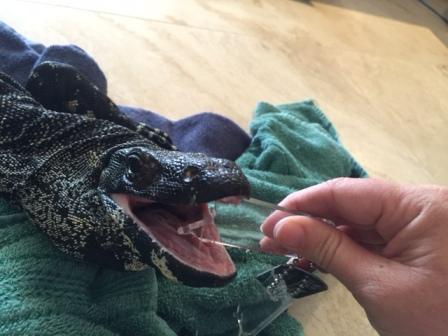
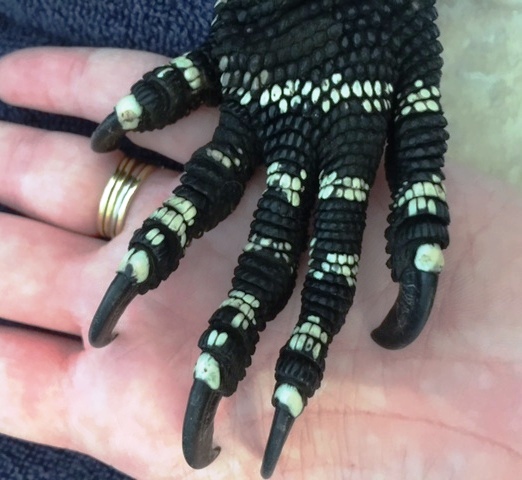
Critter of the Month - April 2016
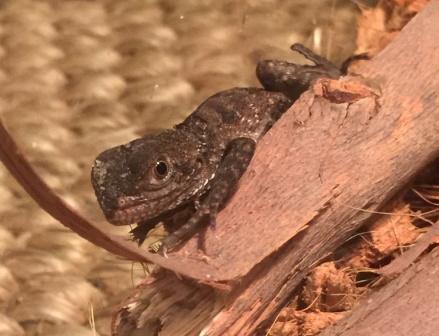
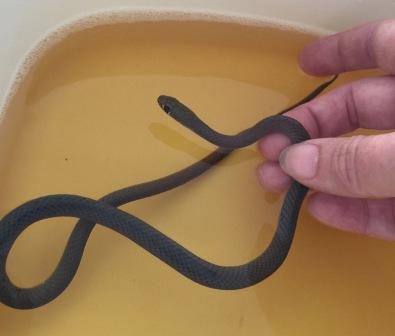
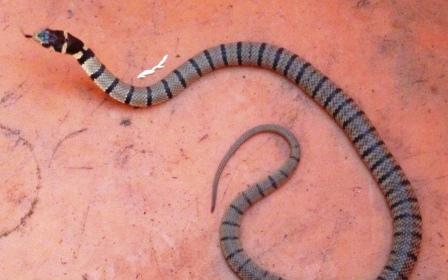
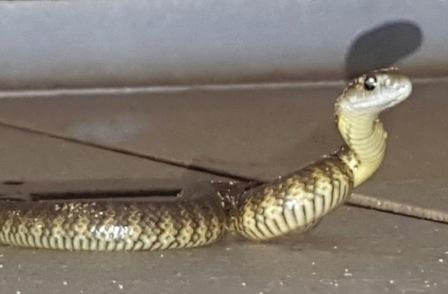
Critter of the Month - May 2016
How many Australian marsupials can you name?
Marsupials are a class of mammals living primarily in Australasia (although the Americas have a few). A distinctive characteristic of marsupials is that most of the young are carried in a pouch. Some well-known Australian marsupials include kangaroos, wallabies, koalas, possums, wombats, bandicoots and Tasmanian devils. Other marsupials include numbats, bettongs, bilbies, quolls, and quokkas. The young are often referred to as joeys.
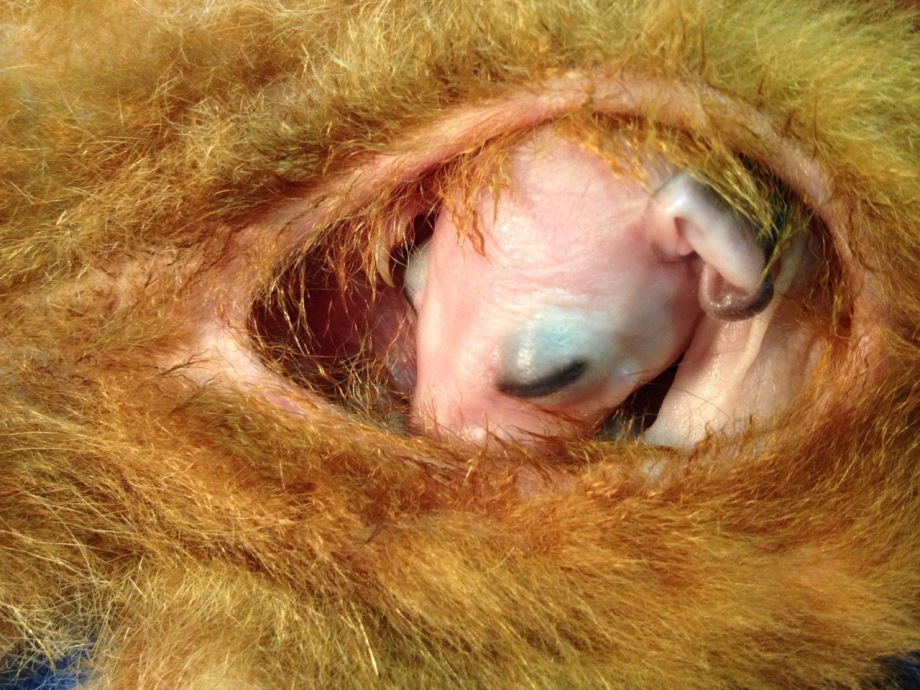
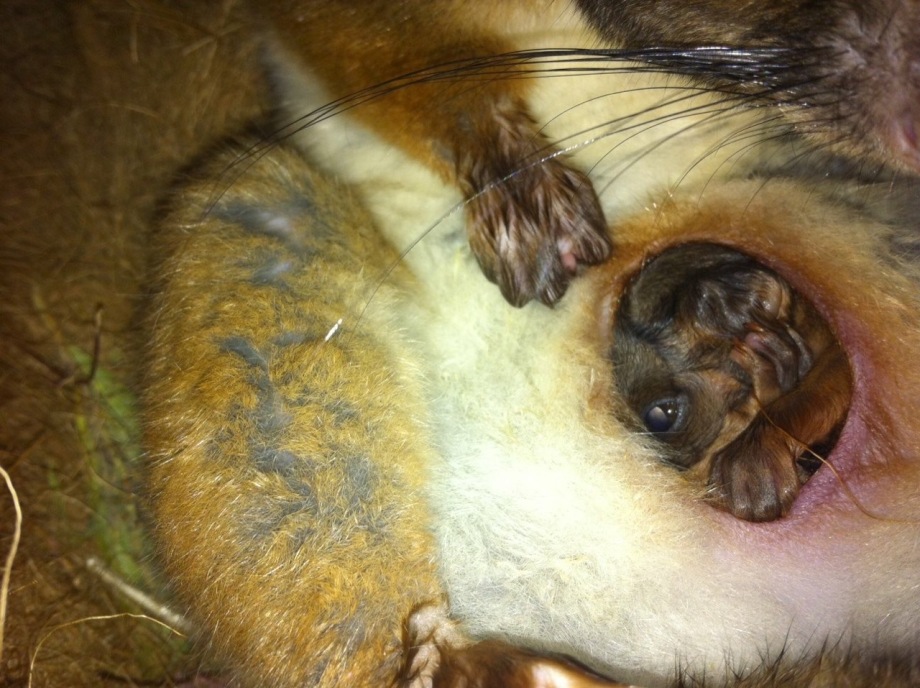
To perform a pouch-check, you will need the following items:
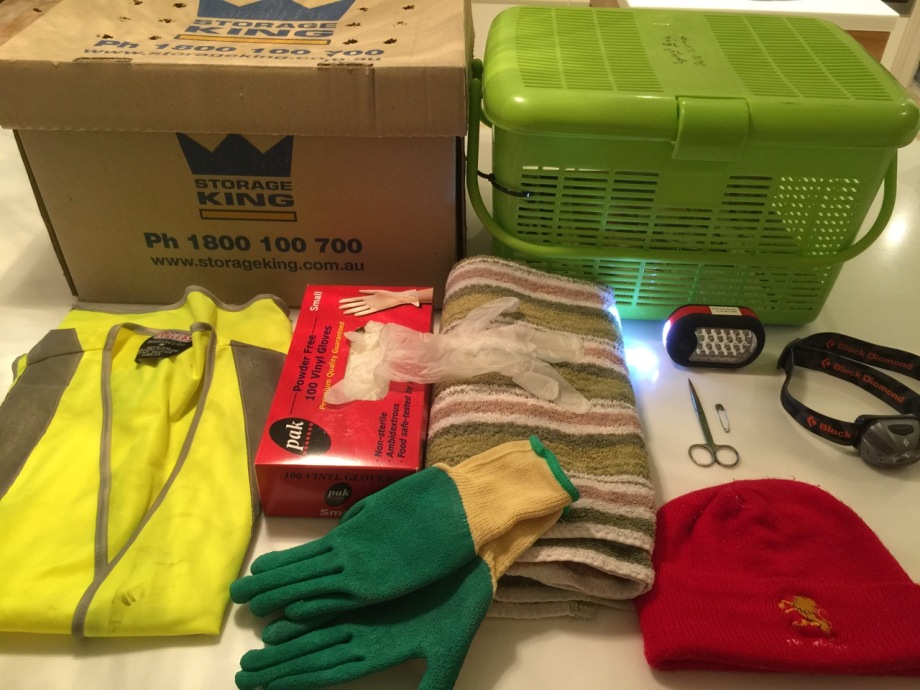
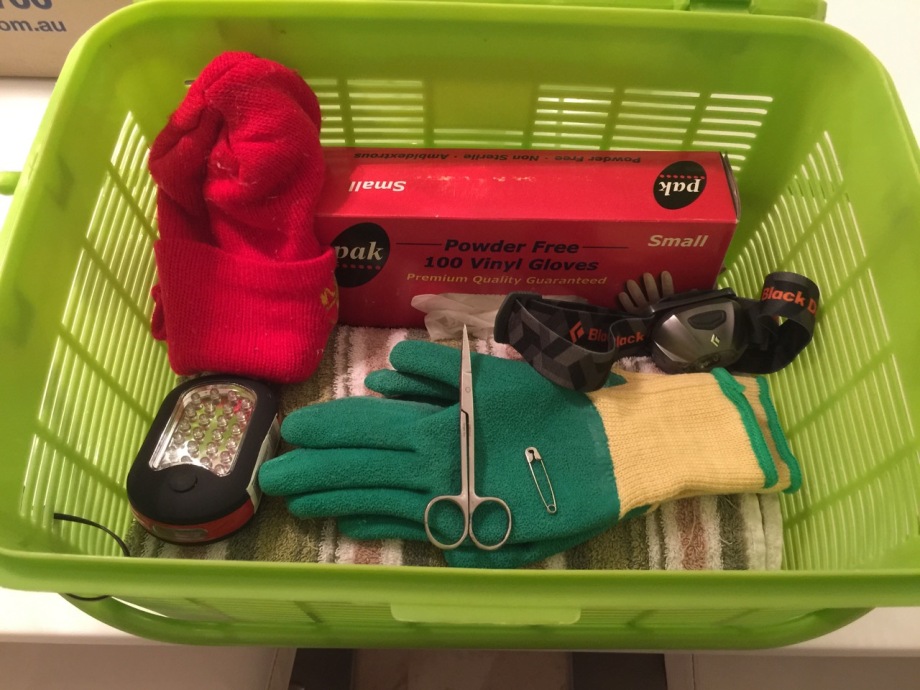
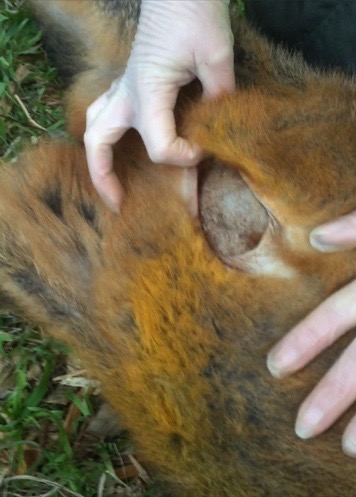
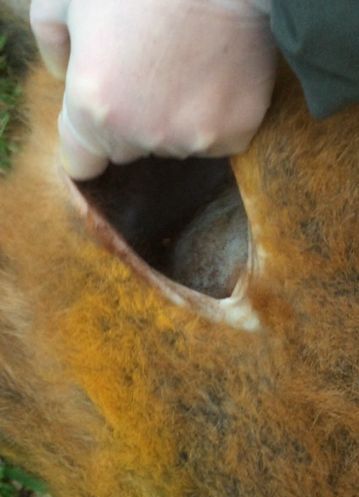
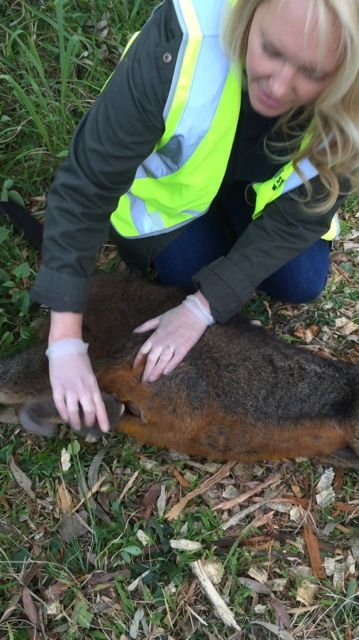
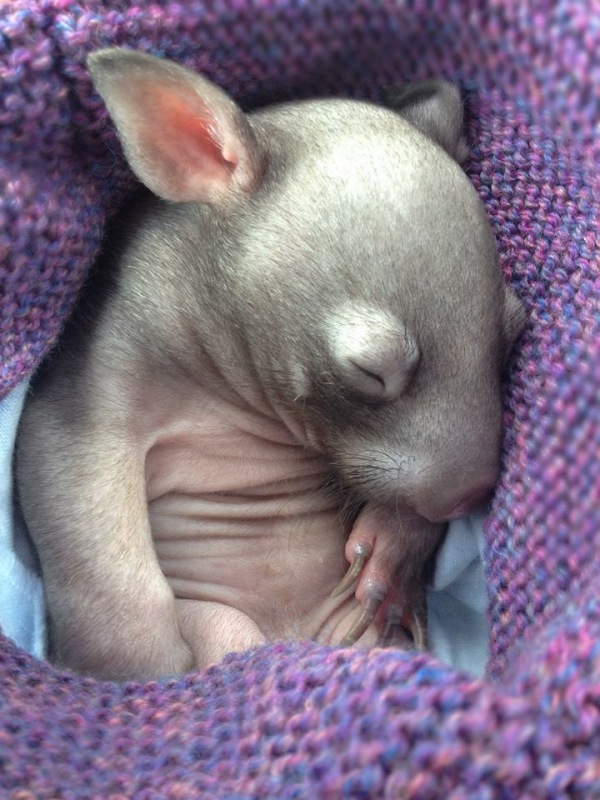
Sydney Wildlife: Critters of the Month June 2016: ‘Wanda' The Wildlife Mobile Clinic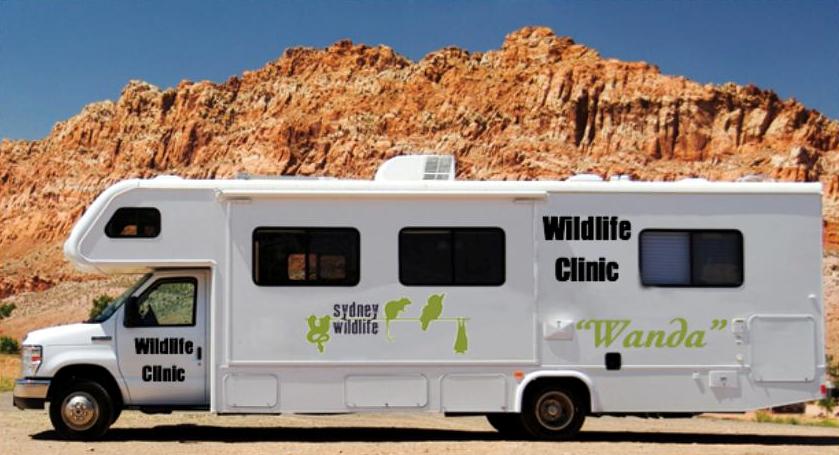 (Concept photo only)
(Concept photo only)
The History
Joan Reid (our Sydney Wildlife Rehabilitation Facility manager) came up with the idea for the Wildlife Mobile Clinic during a Brain-storming Session when a group of young consultants from Ernst and Young came out to volunteer their time at our Rehabilitation Facility. We were all very excited about the idea and discussed how we could go about funding the van. My (then) 11-year-old daughter, Kayleigh, had once written to Premier Mike Baird about saving our wildlife and he had responded favourably so she decided to contact him again. She presented the idea to him and he suggested we get in touch with Ministers Rob Stokes and Brad Hazzard to discuss grant options. Kayleigh, Joan and I presented to each of them and they both loved the idea and were extremely helpful. Minister Stokes set up a meeting with the NSW Minister for the Environment at Parliament House. We caused a bit of a stir when we arrived at Parliament House with one of our kangaroo joeys in tow…! Wildlife carers have to take their dependent baby animals wherever they go as they are often on 3-hourly feeds. It didn’t occur to us that it was something the security department would be concerned about:)
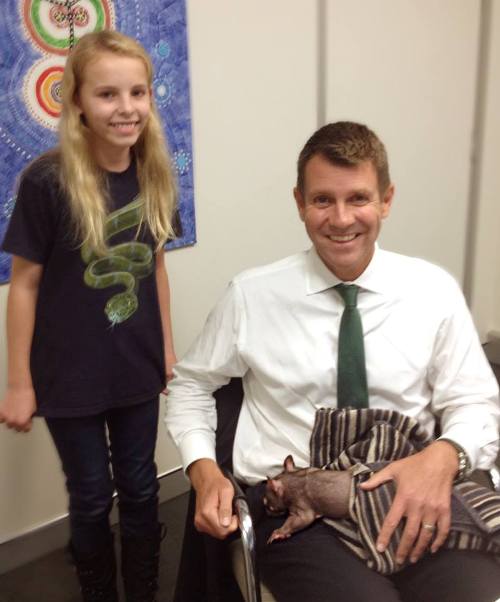
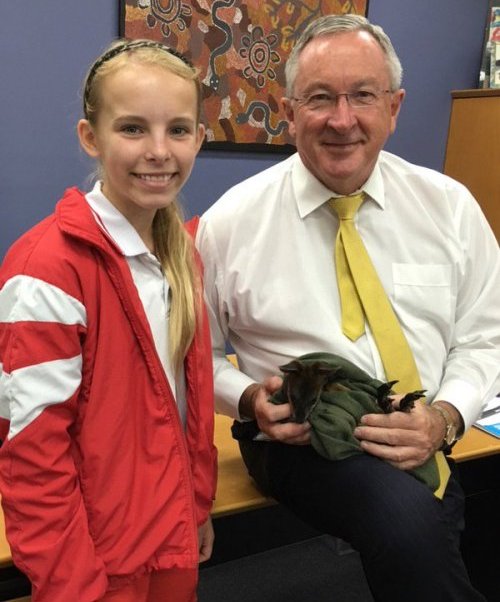
Kayleigh presented to Premier Mike Baird, Minister Rob Stokes, Minister Brad Hazzard, Minister Mark Speakman at Parliament House. The joey and wombat that went to Parliament House:) !
We will be applying for the grants suggested by our Ministers. However, as we don’t know whether or not we will be successful with our application, we have decided to start fundraising in the interim. We don’t want to wait too long because in the past year, we’ve lost:
185 wallabies (not including in-pouch joeys)
84 brush tail possums
62 ringtail possums
19 long nosed bandicoots
12 echidnas
2 goannas
6 snakes
And countless birds including powerful owls, brush turkeys, lorikeets and kookaburras
Our Campaign
When our pets get hurt or sick, we rush them to a veterinarian and are happy to pay whatever it takes to make our furry/feathery/scaly family member all better, right?
But what happens to our wildlife when they get sick? They don't have owners to rush them to the vet or pay for their treatment. Who takes care of them when they are in pain and in need of care?
We are Sydney Wildlife www.sydneywildlife.org.au We are an organisation made up purely of volunteers (we receive no Government funding) - and we rescue these wild animals and care for them. We receive in excess of 13,000 calls for help annually in just the Sydney Metropolitan area. However, we are not veterinarians and sometimes the wildlife need treatment that can only be provided by a professional veterinary surgeon. At the moment we are burdening our local vets with injured wildlife and they are having to bear the medical costs, while our volunteer rescuers bear all other costs. Wouldn't it be wonderful if there was a service that helped our wildlife, our volunteers and our veterinarians…?
Well, we have a solution! Sydney Wildlife’s goal is to establish a Wildlife Mobile Clinic which will provide treatment to injured or sick wildlife, whilst taking the pressure off our local veterinarians. But we need your help to fund it! With your help, we are aiming to raise $50,000 towards buying the van. With a sponsored clinic, we would be able to provide all medical equipment and medical supplies to our volunteer veterinarians, thereby reducing costs to their own veterinary clinics. We would also be providing free training to veterinary students who are always desperate to learn how to treat our wild critters.
The Northern Beaches area is renowned for its natural beauty and for its glorious array of wildlife. But our wildlife face more dangers than ever before - habitat loss being their biggest problem. When they lose their habitat, they are forced to look for new homes, causing them to wander onto roads, become entangled in fences and bringing them into contact with domestic and feral animals that often attack them. The clinic aims to provide quick treatment to these animals and the van can also be deployed to areas where natural disasters have struck.
If you’re one of those people who loves the sound of kookaburras laughing at dawn or if you're delighted by the sight of a gentle wallaby making her way across the grass with a joey in her pouch or even someone who just enjoys watching a friendly blue-tongue lizard gobbling snails in the garden, then please help them by donating to Sydney Wildlife - your donation will go towards acquiring a mobile van or will provide other essential care to wildlife in need.
If you would like to donate to our campaign, click on www.gofundme.com/22abqws
If you would like to become a sponsor and have your name on our van please email info@sydneywildlife.org.au or call Sydney Wildlife on 9413 4300
Our website is www.sydneywildlife.org.au
Wildlife Mobile Clinic from Lynleigh Greig on Vimeo.
Sad News
Dr. Howard Ralph has closed the Sydney practice for Southern Cross Wildlife Care. He will only have the Braidwood Clinic from now on.
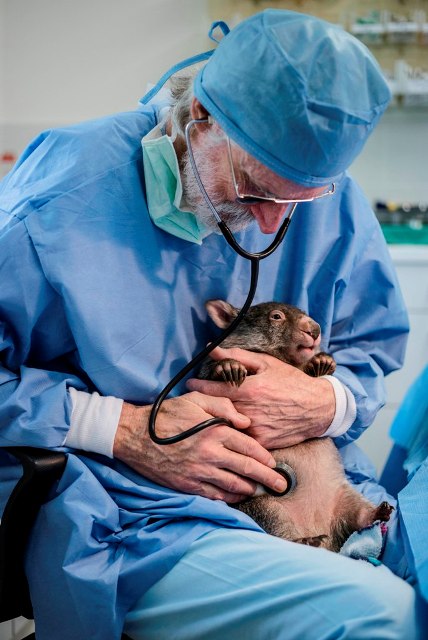
Lynleigh Grieg will continue to run a wildlife article every month as a member of Sydney Wildlife. From time to time her daughter Kayleigh, champion of and for our local wildlife, will contribute items from the her generation’s perspective.
Joan Reid Facility manager of the Sydney Wildlife Rehab Facility will also continue to send in updates.
Sydney Wildlife: Critters of the Month July 2016: ‘Wanda' The Wildlife Mobile Clinic (Concept photo only)
(Concept photo only)
The History
Joan Reid (our Sydney Wildlife Rehabilitation Facility manager) came up with the idea for the Wildlife Mobile Clinic during a Brain-storming Session when a group of young consultants from Ernst and Young came out to volunteer their time at our Rehabilitation Facility. We were all very excited about the idea and discussed how we could go about funding the van. My (then) 11-year-old daughter, Kayleigh, had once written to Premier Mike Baird about saving our wildlife and he had responded favourably so she decided to contact him again. She presented the idea to him and he suggested we get in touch with Ministers Rob Stokes and Brad Hazzard to discuss grant options. Kayleigh, Joan and I presented to each of them and they both loved the idea and were extremely helpful. Minister Stokes set up a meeting with the NSW Minister for the Environment at Parliament House. We caused a bit of a stir when we arrived at Parliament House with one of our kangaroo joeys in tow…! Wildlife carers have to take their dependent baby animals wherever they go as they are often on 3-hourly feeds. It didn’t occur to us that it was something the security department would be concerned about:)


Kayleigh presented to Premier Mike Baird, Minister Rob Stokes, Minister Brad Hazzard, Minister Mark Speakman at Parliament House. The joey and wombat that went to Parliament House:) !
We will be applying for the grants suggested by our Ministers. However, as we don’t know whether or not we will be successful with our application, we have decided to start fundraising in the interim. We don’t want to wait too long because in the past year, we’ve lost:
185 wallabies (not including in-pouch joeys)
84 brush tail possums
62 ringtail possums
19 long nosed bandicoots
12 echidnas
2 goannas
6 snakes
And countless birds including powerful owls, brush turkeys, lorikeets and kookaburras
Our Campaign
When our pets get hurt or sick, we rush them to a veterinarian and are happy to pay whatever it takes to make our furry/feathery/scaly family member all better, right?
But what happens to our wildlife when they get sick? They don't have owners to rush them to the vet or pay for their treatment. Who takes care of them when they are in pain and in need of care?
We are Sydney Wildlife www.sydneywildlife.org.au We are an organisation made up purely of volunteers (we receive no Government funding) - and we rescue these wild animals and care for them. We receive in excess of 13,000 calls for help annually in just the Sydney Metropolitan area. However, we are not veterinarians and sometimes the wildlife need treatment that can only be provided by a professional veterinary surgeon. At the moment we are burdening our local vets with injured wildlife and they are having to bear the medical costs, while our volunteer rescuers bear all other costs. Wouldn't it be wonderful if there was a service that helped our wildlife, our volunteers and our veterinarians…?
Well, we have a solution! Sydney Wildlife’s goal is to establish a Wildlife Mobile Clinic which will provide treatment to injured or sick wildlife, whilst taking the pressure off our local veterinarians. But we need your help to fund it! With your help, we are aiming to raise $50,000 towards buying the van. With a sponsored clinic, we would be able to provide all medical equipment and medical supplies to our volunteer veterinarians, thereby reducing costs to their own veterinary clinics. We would also be providing free training to veterinary students who are always desperate to learn how to treat our wild critters.
The Northern Beaches area is renowned for its natural beauty and for its glorious array of wildlife. But our wildlife face more dangers than ever before - habitat loss being their biggest problem. When they lose their habitat, they are forced to look for new homes, causing them to wander onto roads, become entangled in fences and bringing them into contact with domestic and feral animals that often attack them. The clinic aims to provide quick treatment to these animals and the van can also be deployed to areas where natural disasters have struck.
If you’re one of those people who loves the sound of kookaburras laughing at dawn or if you're delighted by the sight of a gentle wallaby making her way across the grass with a joey in her pouch or even someone who just enjoys watching a friendly blue-tongue lizard gobbling snails in the garden, then please help them by donating to Sydney Wildlife - your donation will go towards acquiring a mobile van or will provide other essential care to wildlife in need.
If you would like to donate to our campaign, click on www.gofundme.com/22abqws
If you would like to become a sponsor and have your name on our van please email info@sydneywildlife.org.au or call Sydney Wildlife on 9413 4300
Our website is www.sydneywildlife.org.au
Wildlife Mobile Clinic from Lynleigh Greig on Vimeo.
Sydney Wildlife Mobile Clinic Fundraiser
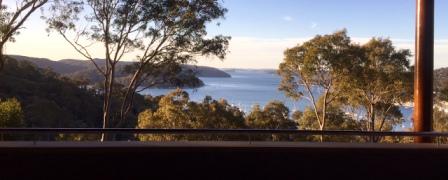
Sydney Wildlife: Critter of the Month August 2016:
Bandicoots: Friends Or Foes?
When someone mentions the word ‘bandicoot’ what do you think of?
Chances are, if you have been influenced by recent media articles, you will think of them as little parasite-carrying critters that dig giant craters in your lawn and drop ticks all over your pets while you sleep…!
But these poor little guys are getting a bad rap - and totally unfairly.
___________________
Bandicoots, like many other marsupials of Australia, have undergone several species extinctions since European settlement due to habitat loss and the introduction of predators (foxes, dogs and cats). Of the estimated 12 species of bandicoot in Australia, approximately half are now extinct, or threatened.
Once prevalent in the backyards of Sydney suburbs, long-nosed bandicoots have been almost decimated. Now, the northern beaches area is one of the last remaining strongholds for these little marsupials in the Sydney region.
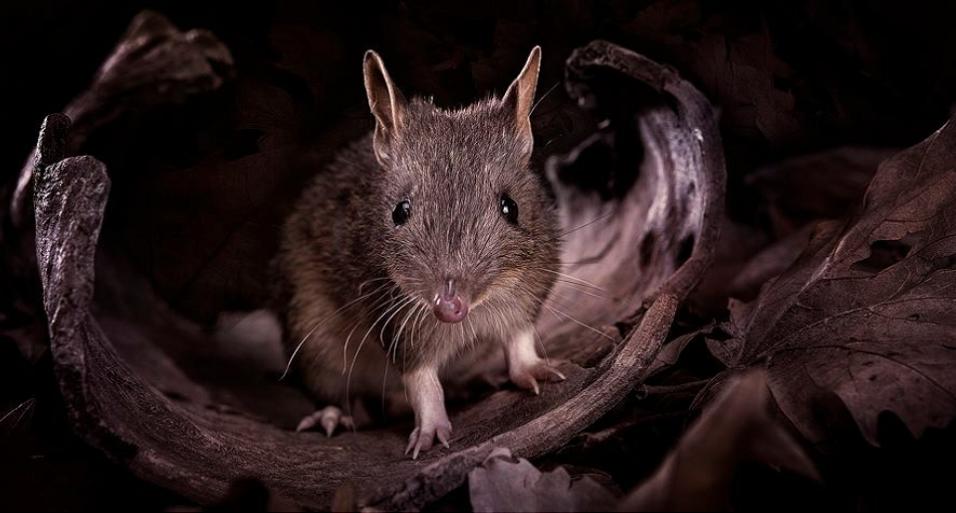
Bandicoots and ticks
The story about their being primary hosts for ticks supposedly originated from a small quantity of papers presented in the 50s and 60s. More recent studies by researchers have proven that they are no more likely to host the parasites than you, me, your cat, my dog or any other animal.
This is an excerpt from an article in Australian Zoologist: 2015 Vol. 37, No. 3, pp. 288 293,by HW Lydecker, E Stanfield, N Lo, DF Hochuli, and PB Banks (2015)
Are urban bandicoots solely to blame for tick concerns?
“The paralysis tick Ixodes holocyclus bites humans, companion animals, and livestock in eastern Australia leading to symptoms that range between negligible and severe.
Bandicoots (Family Peramelidae) are commonly cited as the “primary host” of I. holocyclus in the media and blamed for outbreaks of ticks and disease fears, creating conflicts between conservation and tick management. We discuss how evidence for bandicoots being essential to the I. holocyclus life cycle has originated from a small number of papers that were limited in scope. False assumptions of host-specificity have contributed to the extrapolation of studies in one ecosystem, yet no study has sampled the full range of hosts of I. holocyclus to understand the relative role of each species across the entire range of I. holocyclus in relation to health threats. Bandicoots are one of many potential tick hosts but cannot yet be considered the “primary host” of I. holocyclus. Researchers and media should refrain from highlighting bandicoots as the main I. holocyclus host without mentioning caveats, and work towards gaining a better understanding of tick-host interactions across the range of I. holocyclus in order to better understand and mitigate public health risks.”
Basically any land-based creature acts as a host for ticks. The fact that ticks love to live in longish grasses, dense scrub and lantana brambles is rather unfortunate for bandicoots, as it is their favourite habitat, too. Humans tend to associate bandicoots with ticks because when we walk through areas where they live, or allow our pets to venture into their favourite habitat, we come out covered in ticks. They cannot be blamed for the spread of ticks just because they often share the same habitat.
It is interesting to note, however, that there are a large number of ticks present on Scotland Island but there are no bandicoots on the island - and never have been.
Bandicoots have a relatively small home-range and are territorial so are not prone to wandering far and wide. Animals such as foxes, feral cats, domesticated animals and humans tend to wander long distances and are, therefore, more likely to be responsible for spreading ticks from place to place.
Tick populations increase in response to weather, climate conditions and where fire has been absent from an ecosystem for extended periods of time.
The Benefits of having bandicoots in your garden:
If you have bandicoots in your garden, consider yourself to be lucky!
Bandicoots are known to dig small conical holes in lawns and garden beds. But instead of being cranky about it, you need to realise that they are ridding your grass of nasty curl grubs (that cause die-back in lawns) and insects that may be destroying your plants.
They are also providing a free aeration service!
Best of all - they eat spiders - including the venomous Sydney funnel web spider! They also seek out insect larvae and other pests as well as tubers and fungi.
Bandicoots are an important part of our ecosystem. Without them, the health of our bushland is vulnerable. They carry beneficial fungi and bacteria around on their bodies which can act as antibiotics for plants, promote plant growth and assist seed germination.
Bandicoots also assist in stimulating natural regeneration by disturbing the soil which acts as a trigger for the regeneration of plants. Our bushland needs native fauna to continue to have a viable future!
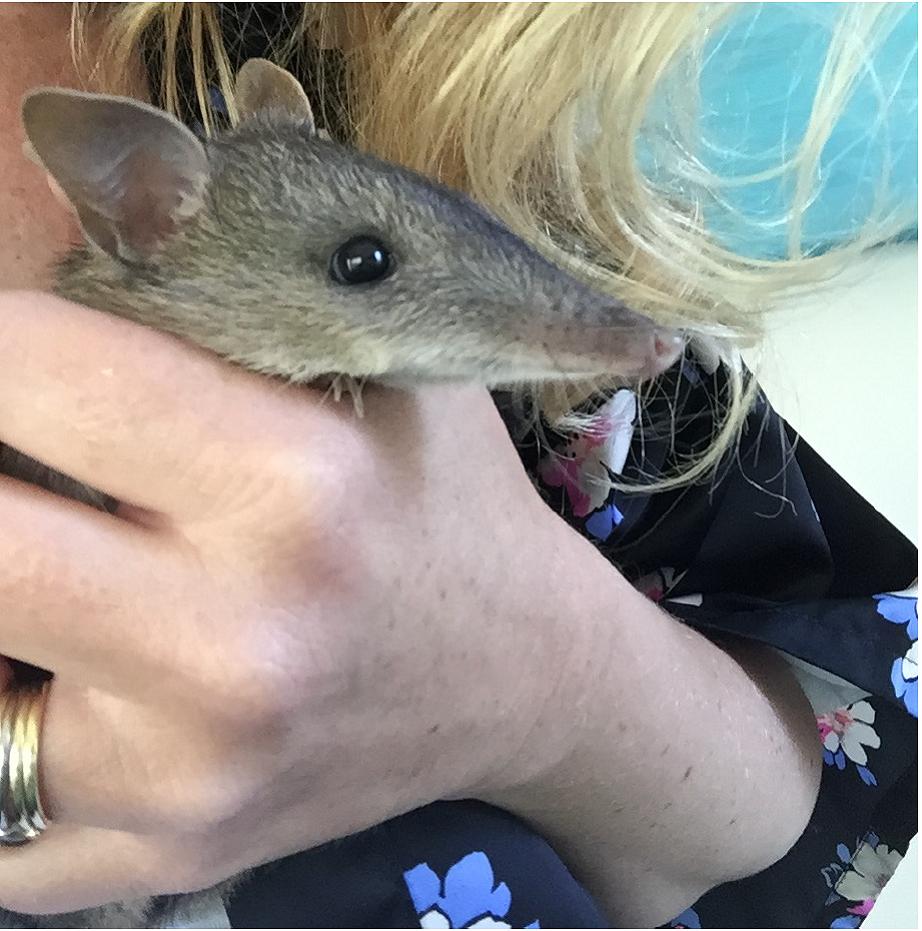
Reproduction:
Being a marsupial, the females have a pouch and give birth after a very short gestation period of around twelve days. They attach to one of the mum’s teats and suckle until they are ready to emerge. The long-nosed bandicoot usually has two to three joeys. After 50 - 60 days the young are independent adults and can breed before they are six months old.
Living harmoniously with these quiet neighbours:
If conical holes appear in your lawn, just fill them in with some soil and know that
bandicoots have performed a service for you.
Keep your pets indoors at night-time so that they will not injure these little garden-helpers.
If you happen upon an injured bandicoot, call Sydney Wildlife on 9413 4300.
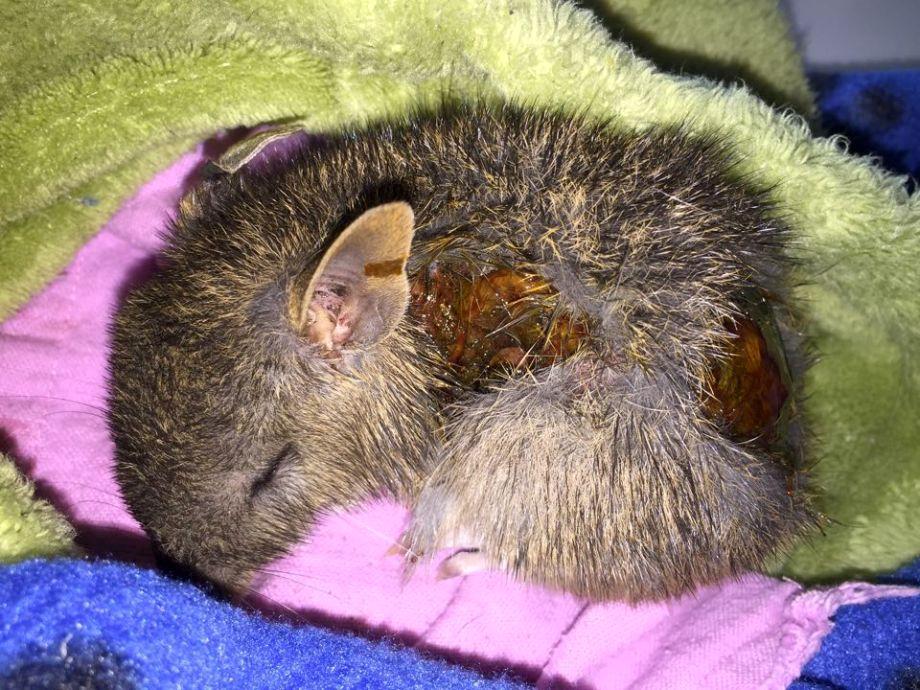
Baby bandicoot - cat victim.
Spring-Time = Snake-Time
Spring is upon us And this means that our beautiful reptiles will be emerging for all the good things that the warm weather has to offer - sunshine, food and… love!
Of all the glorious reptiles we have here on the Northern Beaches, snakes would have to be the most feared and the most misunderstood of all. We often get called out to remove a “6-foot brown snake” but when we get to the site, it’s invariably a swamp snake or a whip snake or a snake that isn’t even brown at all!
We’ve decided to dedicate this article to two little species of snakes that are local to our area and that are often confused with the infamous eastern brown snake (Pseudonaja textilis). They are, in fact, relatively harmless to humans and can be very useful in eradicating pests from our gardens.
The species we will be focussing on this month are:
Yellow-faced whip snakes (Demansia psammophis) and
Black-bellied swamp snakes/marsh snakes (Hemiaspis signata)
Let’s start with the gorgeous little swamp snake. They are referred to as a black-bellied swamp snake or a marsh snake. We often refer to them, fondly, as ‘marshies’:
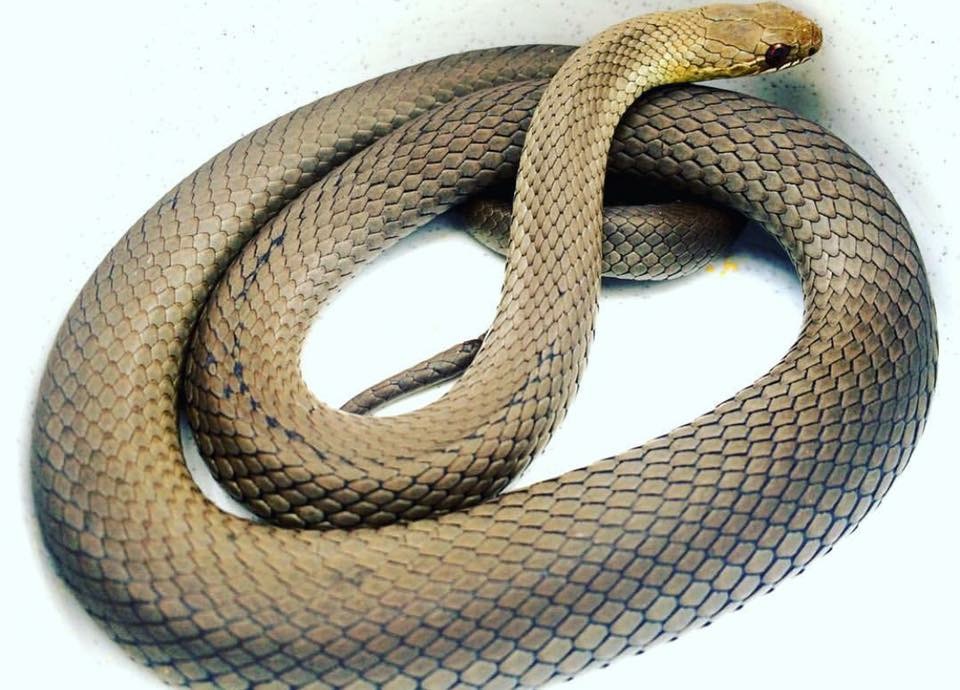
Photograph by Lisa Wynn
The black-bellied swamp snake (Hemiaspis signata) can vary greatly in colour and size, depending on the area in which they are found. Their most distinguishable features are their white facial 'racing stripes' - one behind each eye and one above the lip on either side of their heads. As their name suggests, they live in moist areas adjacent to swamps and lagoons and creek-side vegetation. They also like well-watered gardens. Their diet consists mainly of skinks and frogs.
Whilst they are mildly venomous, they are not considered dangerous. Their venom is used primarily to subdue their prey.
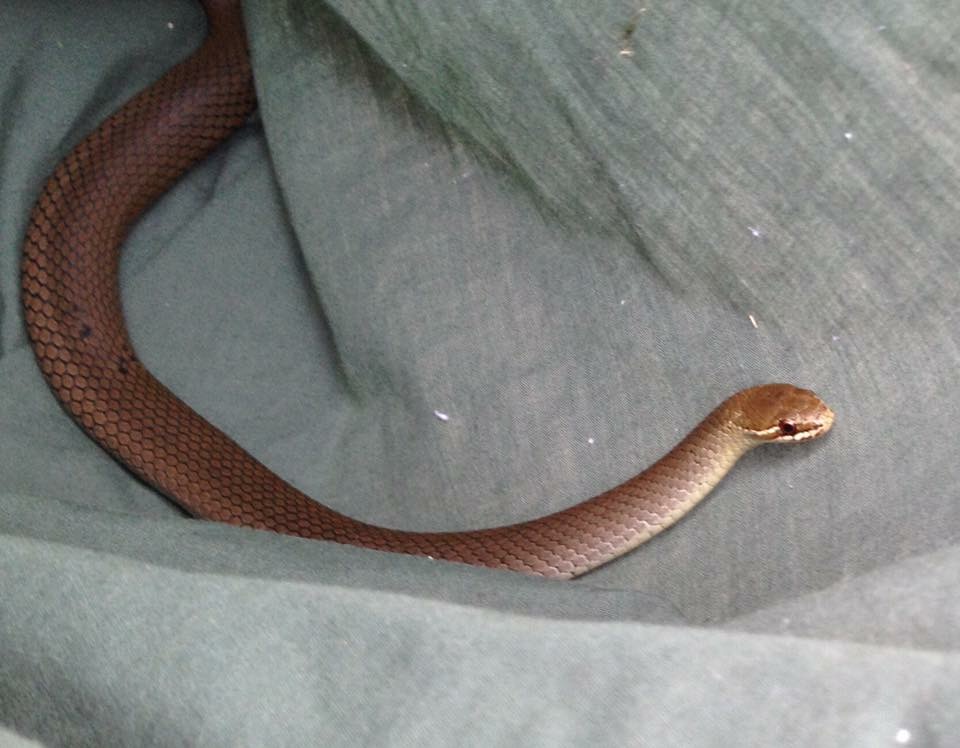
This photo of a marsh snake shows the beautiful white stripes on its face. The member of the public that called us to rescue this snake was convinced she was an eastern brown snake (Pseudonaja textilis) until we pointed out the facial markings and black belly - visible in the next photo:
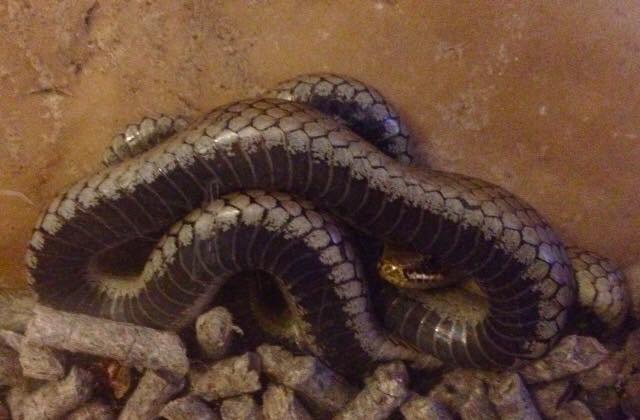
Our second focus species is the very beautiful Yellow-faced whip snake (Demansia psammophis):
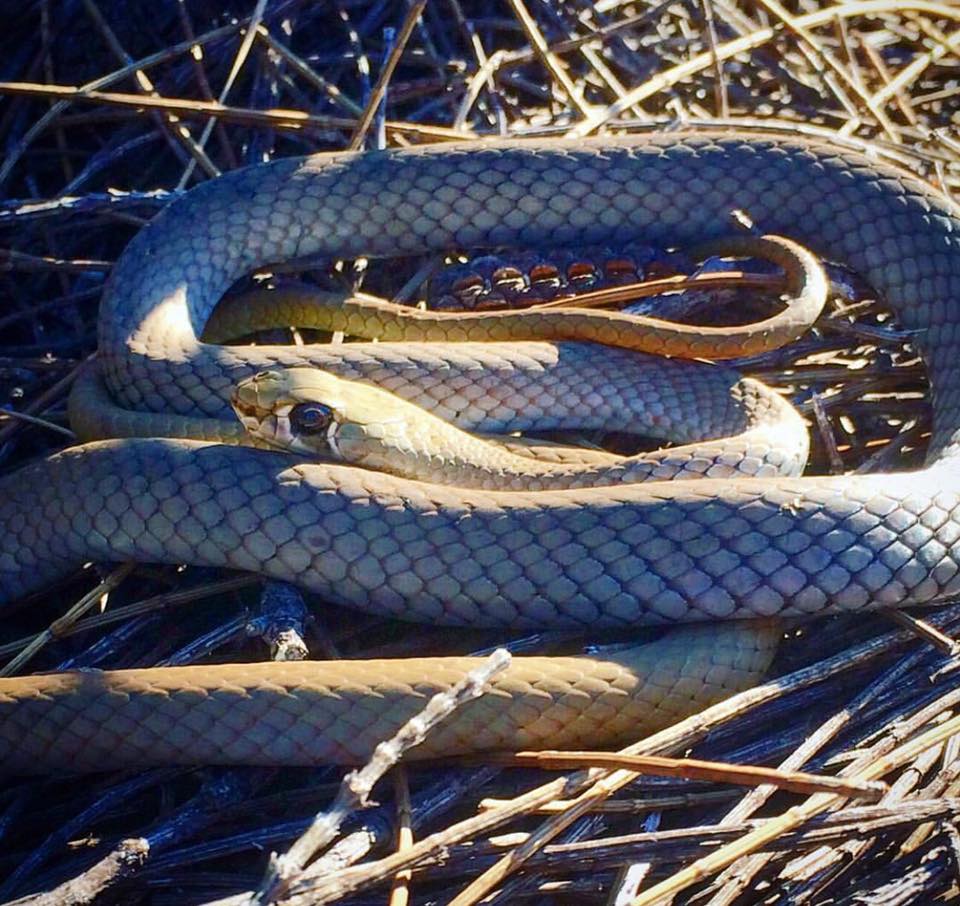
Photo by Lisa Wynn
This photo of the amazingly beautiful yellow-faced whip snake (Demansia psammophis) clearly shows the 'comma-shape' around its eye. In the sunshine, their body can often appear to have a rainbow sheen (leading to their nickname of rainbow ribbons/rainbow worms).
These little snakes can appear to be very brown in colour but they can also look olive green.
The most noticeable difference between these little guys and eastern brown snakes is the pretty comma-shape around the eye area. They have a mild venom which they use to subdue their prey.
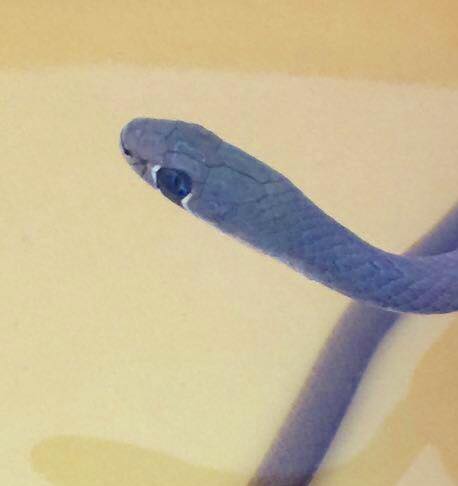
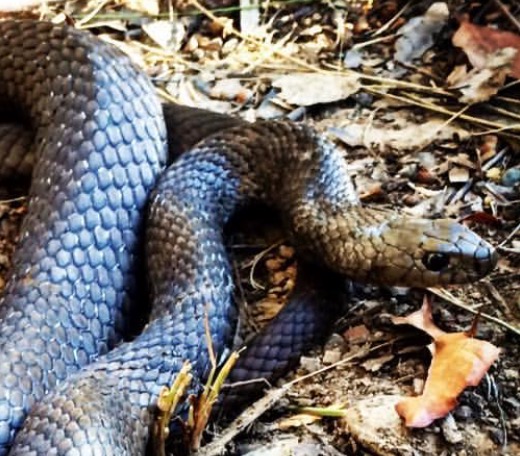
Can you see the difference between the whip snake’s face and the eastern brown snake’s face?
The eastern brown snake (Pseudonaja textilis) can also vary greatly in colour and size. The one pictured above is fairly dark. The one pictured below is quite light in colour:
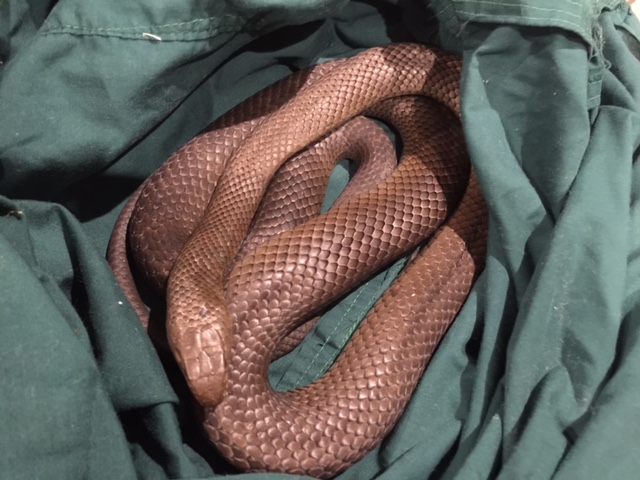
As you can see, it’s fairly easy to see the facial markings on the marsh snakes and whip snakes. The eastern brown snakes won’t have these markings.
Many snakes are needlessly killed each year - just because they happen to be brown in colour. Trying to kill a snake puts you in much greater danger than leaving it in peace, as you are entering their strike zone to kill them.
What to do if a snake enters your house:
- Don't panic
- Remove pets and children from the room
- Close the door to the room or keep a close eye on it until help arrives
- Call for advice:
- Sydney Wildlife 9413 4300
- Wires 1300 094 737
- Sydney Snake Catchers (fees apply) 1300 599 938
Grey Headed Flying Foxes:
Sydney Wildlife Critter of the Month October
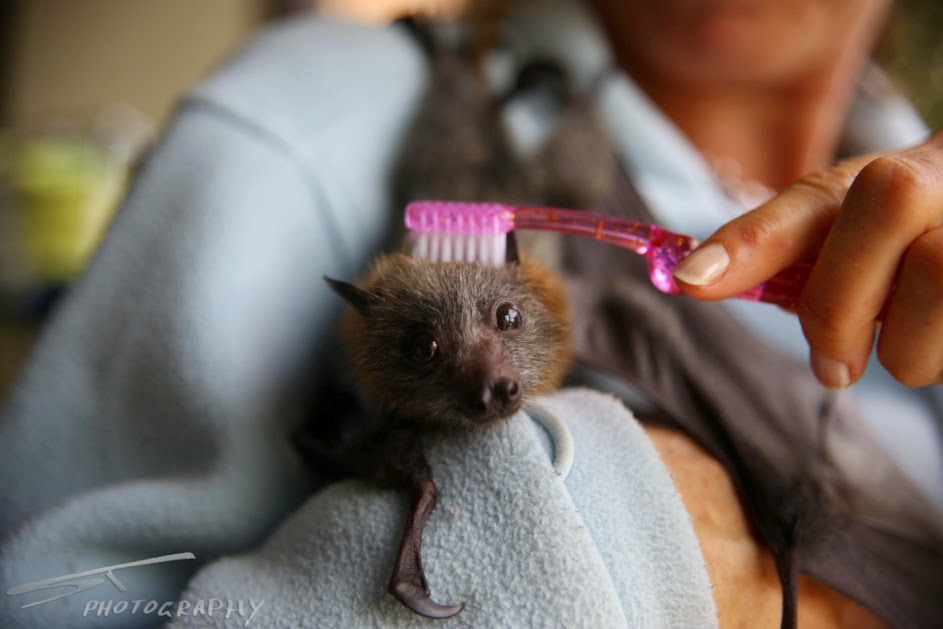
Grey Headed Flying Foxes
All photos by photographer and (awesome) bat carer Sarah Thorpe
.jpg?timestamp=1475223040803) You may perceive them as blind, blood-sucking, loud, smelly, flying rodents that make nests in peoples’ hair… But these adorable little creatures couldn’t be more different from that description.
You may perceive them as blind, blood-sucking, loud, smelly, flying rodents that make nests in peoples’ hair… But these adorable little creatures couldn’t be more different from that description.
Grey-headed flying foxes are the largest bats in Australia, with a wingspan of up to 1.5 metres!
They weigh between 600g and 1kg (about the weight of a pineapple). Their fancy, scientific name is Pteropus poliocephalus (if you want to impress your friends with your esteemed vocabulary).
Other members of the Pteropus family include the little red flying fox, the spectacled flying fox and the black flying fox.
Grey-headed flying foxes are the only Pteropus to have fur that reaches all the way down to their ankles, whereas other species only have fur that reaches their knees. They are also the only Australian flying fox with a reddish brown circle (or collar) of fur around their necks. Their heads are light grey and their bodies are a darker greyish black. They are estimated to live between 12 and 15 years in the wild, but in captivity they have lived as long as 25 years.
Where are they found?
.jpg?timestamp=1475223450902) Well, you’ll be happy to hear that you can find these precious creatures all over Sydney, all year round. There are bats everywhere! The grey-headed flying foxes are furrier, so they cope better in the cooler climates, from Coffs Harbour to the South Coast. Black flying foxes range from Sydney all the way up to the warmest parts of Queensland. Spectacled flying foxes cope alright in the heat because their fur is quite short, so they are mainly located in Northern Queensland (Townsville to Cairns to Thursday Island)
Well, you’ll be happy to hear that you can find these precious creatures all over Sydney, all year round. There are bats everywhere! The grey-headed flying foxes are furrier, so they cope better in the cooler climates, from Coffs Harbour to the South Coast. Black flying foxes range from Sydney all the way up to the warmest parts of Queensland. Spectacled flying foxes cope alright in the heat because their fur is quite short, so they are mainly located in Northern Queensland (Townsville to Cairns to Thursday Island)
Little red flying foxes migrate in huge groups and can be found all over the place, and as far West as Wagga Wagga. Though they may not be found all year round in these other places, and we’re not really sure why. It may be due to the need to migrate and find food or it may just be a seasonal thing.
They are native to Australia and definitely aren’t pests. In fact, they are a protected species and should not be intentionally harmed by any human, as this is against the law.
What is their habitat?
Grey-headed flying foxes roost together in large colonies in trees, as they are very social animals.
These trees seem to be very randomly picked, they can be in a backyard, next to a busy road, in melaleuca swamps, rainforests or in banksia woodlands. Most roosting sites are close to water sources such as lakes, rivers, or the beach.
During the day, they all sleep in the trees close together, all wrapped in their own black wings like upside-down ninjas. At night, the adults leave to find food and stretch their wings. They usually travel around 50km to feeding sites, but the longest ever recorded migration in one night was 350km! Babies that haven’t yet developed fur cling to their mother’s underside as she flies around, but older babies (about 4-5 weeks old) with all their fur are left in maternal camps to be nursed until - after about 12 weeks - they become independent.
What do they eat?
.jpg?timestamp=1475223017227) Flying foxes are frugivores and nectarvores, meaning that they feed on fruit, pollen and nectar from flowers. While they mostly eat from native plants, they occasionally eat from introduced species as well. Their main food sources are from Eucalyptus, Melaleuca and Banksia flowers, but they eat from around 187 different plant species. Their favourite fruits are from lilli-pillies and figs.
Flying foxes are frugivores and nectarvores, meaning that they feed on fruit, pollen and nectar from flowers. While they mostly eat from native plants, they occasionally eat from introduced species as well. Their main food sources are from Eucalyptus, Melaleuca and Banksia flowers, but they eat from around 187 different plant species. Their favourite fruits are from lilli-pillies and figs.
Occasionally, the foxes eat from cultivated fruits if they can’t find other food due to habitat loss. If bats are eating from your garden, the best way to protect your fruit is to use wildlife-safe netting:www.wildlifefriendlyfencing.com and they deliver straight to your house too!
This wildlife-friendly netting has hole-spacing no wider than 4-5mm, so the bats don’t get their claws stuck in the gaps, which could lead to starvation or strangulation.
What do they do for the environment?
Bats play a critical role in pollination. When feeding, pollen gets stuck to their fur and as they move around, the pollen brushes off onto other flowers, helping them to grow more flowers. Bats also spread plant seeds throughout forests, helping to regrow damaged environments. They have a remarkably quick digestion rate of 20 minutes, so when pollen and seeds are ingested, they are quickly spread throughout the forest.
Their role in pollination is even more important as that of birds and insects as they feed on different plants and support different plant species. Bats have the ability to migrate over vast expanses of land, and without them, the forests WILL die as the birds and insects just can’t cover enough area of the huge amounts of vegetation here in Australia.
Bats are also a key food source for animals such as pythons, goannas, birds of prey (like sea eagles) and, in other areas, crocodiles.
What threats do they face?
Sadly, bats face many issues. Grey-headed flying foxes are listed as ‘vulnerable to extinction’ on the IUCN Red List of Endangered Species. They suffer the effects of habitat loss and, as such, are often harassed or shot by farmers when they are forced to resort to eating from orchards and cultivated foods. There are estimations that over 100,000 are illegally shot every year.
Unfortunately, some farmers are given legal permission to shoot flying foxes as well, but the shooting isn’t regulated. They are legally allowed to shoot 50 bats per night, but this limit is often exceeded. The bats that do get shot often don’t die immediately and they suffer horrendous wounds and die slowly on the ground.
They are dispersed from their homes using loud noises such as banging, loud machinery, gas guns, water cannons and stock whips just because they are described as loud and smelly, which I find to be somewhat hypocritical. Babies (pups) can also be left at the site in the panic to get away and will die alone, orphaned.
They are threatened by heatwaves caused by Climate Change, as flying foxes find it very difficult to cope in warmer temperatures and can literally fall dead to the ground from heat-stress.
Since 1994, over 24,500 grey-headed flying foxes have died from extreme heat events alone.
Bats are also victims of electrocution between powerlines, which can kill both mothers and their babies clinging to them. Often the pups can survive, though, but are left badly burnt and dangle from their mother’s carcass without food or shelter. It’s important to call your local Wildlife Rescue organisation if you see a dead bat on powerlines.
Bats also face competition for food and habitat from other species such as nectar-eating birds like lorikeets.
Many bats are perceived as pests or rodents due to the fact that some bats contract viruses such as Australian Bat Lyssa Virus. The virus is highly contagious through blood and saliva and any bats who catch it die quickly. Even so, less than 1% of the bats actually get the the virus at any one time and it’s pretty obvious when they have it, due to their sluggish behaviour and other prominent symptoms. The virus can be vaccinated against and is completely preventable.
What can I do to help the bats?
There is no doubt that this species is in need of help. You can start by not supporting any bat dispersals which cause stress and death to the bats. If you have a camp of bats near you and you have a weird paranoia of getting sick from Lyssa Virus, you could consider get vaccinated. If they’re too loud and you can’t sleep at night, you could install double-pane windows and use earplugs when you sleep. If you think they smell, you could consider getting air-freshener in your house and plant lots of sweet-smelling plants in your garden.
You can donate to charities that help bats, such as Sydney Wildlife, Wires and batconservation.org or better yet, join them and help rescue and rehabilitate the injured, orphaned or sick flying foxes.
Bats are badly affected by Climate Change and you can help by not contributing to this global crisis. Don’t litter, save energy and be generally as eco-friendly as possible.
Use wildlife-friendly fruit-tree netting so animals don’t get tangled in it.
Don’t forget to encourage your friends to be aware of the problems that bats face.
Common Myths:
• Flying Foxes do not make nests out of peoples’ hair. They don’t even make nests!
• They don’t suck blood. The only bat species that sucks blood is the Vampire Bat, and they don’t drink human blood, nor do they live in Australia.
• Flying Foxes aren’t blind. In fact, they have ten-times better eyesights than humans!
• Bats are not pests. They are a vulnerable species protected by the law and are native to Australia.
• Bats don’t shriek and wail to be scary, they chat to be sociable, and their noise levels are no different to that of a room filled with people.
All in all, it can be safely said that flying foxes are some of the cutest and most valuable crittersthat Australia has to offer and certainly should not be disregarded. Join the BATtalion of flying foxlovers and keep an eye out for our fauna!
by Kayleigh Greig
Bibliography:
Websites:
Pteropus poliocephalus (Grey-headed Flying-fox)www.environment.gov.au/cgi-bin/sprat/public/publicspecies.pl?taxon
Grey-headed flying fox: en.wikipedia.org/wiki/Grey-headed_flying_fox
http://www.depi.vic.gov.au/environment-and-wildlife/wildlife/flying-foxes/facts-about-flying-foxes
http://www.depi.vic.gov.au/environment-and-wildlife/wildlife/flying-foxes
http://www.arkive.org/grey-headed-flying-fox/pteropus-poliocephalus/
http://eol.org/pages/327288/details
http://www.australiananimallearningzone.com/grey-headed-flying-fox.htm
http://www.australianwildlife.net.au/pdf/wildlife/Flying_Fox_Article_June2010.pdf
People:
Ben Dessen
Lynleigh Greig
Television Programs:
Deadly 60
Get Wild
No me, no tree | Tim Pearson | TEDxCanberra
Tim Pearson dedicates his time to researching one of Australia's great unsung ecological heroes - the Flying Fox. In this touching and illuminating talk, Tim argues that we should give them superstar status, and care more about these creatures and the vital work they do. At:https://www.youtube.com/watch?v=qnOhS5jVBFk
Sydney Wildlife: Critter of the Month November 2016
What is the cutest animal you can think of? Most people say that furry animals are the most adorable. Many think that animals with giant-sized dark eyes are the most loveable. And many agree that critters with unusual abilities like being able to hang from their tails or ride on their mother’s backs are the cutest of them all.
Well, picture this: a furry little creature that lives in its mum’s pouch, popping its fuzzy little head out occasionally to view the world through big liquorice eyes. Then when it is big enough to emerge from the pouch, it bounces around on gangly little legs, stopping only to munch on fresh green grass or foliage. This creature is the personification of cuteness. This creature is a swamp wallaby.
Swamp wallabies are macropods. Macropods are marsupials (animals that usually carry their young in pouches) which are found on the Australian continent and they comprise kangaroos, wallabies, quokkas and tree-kangaroos. The word macropod comes from the Greek meaning for “big foot”. They all have very large hind feet for jumping/hopping and very powerful and muscly tails. Most macropods have smallish heads, large ears and the females have forward-facing pouches.
If a female macropod is killed in a collision with a vehicle, her baby (joey) can actually survive the impact as it is cushioned inside her pouch. This is how we came to meet Cassius and Xena - two extraordinary little swamp wallaby joeys - that overcame almost insurmountable odds to survive in this harsh, human-focussed world.
We think that Xena and Cassius were born about 10 days apart. Xena was living in her mum’s pouch in a little remnant pocket of bushland in Belrose and Cassius was living in his mum’s pouch in an area of bushland in a National Park. Neither knew of the other’s existence. Until fate intervened. Late one night, Xena’s mum was struck on Morgan Rd and killed. Xena stayed in her dead mum’s pouch and waited, crying as the flow of milk gradually stopped and the warmth from her mother ebbed away. We don’t know how long she was alone but thankfully, someone that knew to stop and check dead marsupials for pouch-young found little Xena and rang Sydney Wildlife. Cassius was also extracted from his deceased mum’s pouch and each joey was taken into care by different Sydney Wildlife carers and were started on 3-hourly mild feeds - day and night. Ashley became Xena’s human mum and I became Cassius’ human mum.
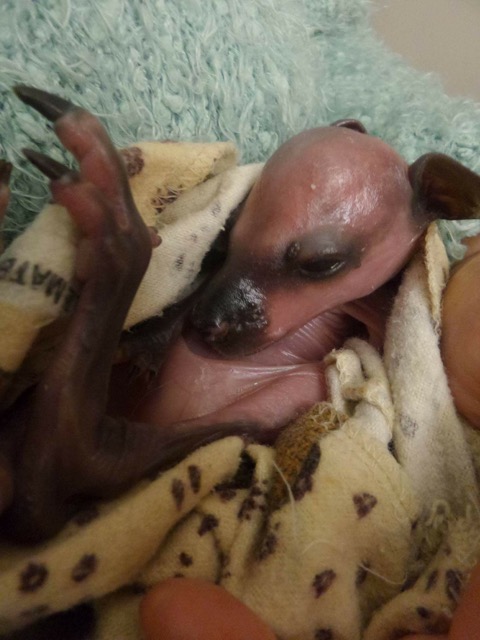
Xena was a minuscule 173g when she was rescued from her dead mum’s pouch.
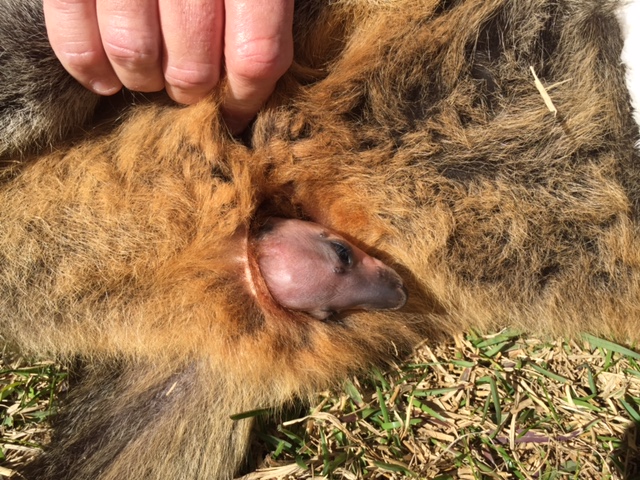
Cassius was 300g when he was taken from his mum’s pouch.
Both the joeys were furless when they were taken into care and these furless joeys are referred to as ‘pinkies’. Swamp wallabies can start reproducing between 15–18 months of age. Gestation is about 35 days and the tiny jelly-bean-sized joey crawls from the birth canal into the pouch, attaches to a teat and begins suckling. The young are carried in the pouch for about 8–9 months.
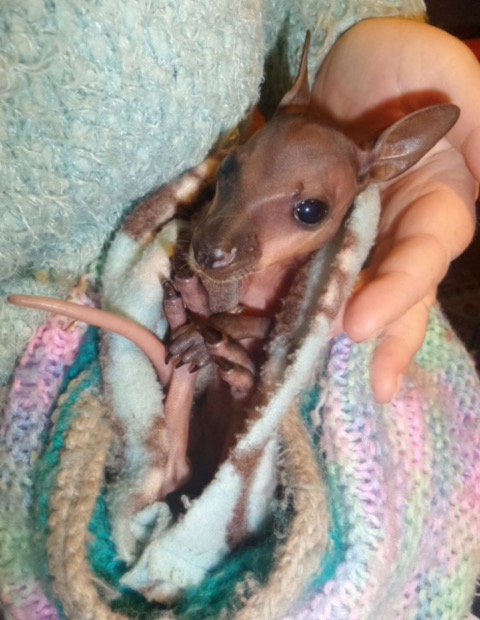
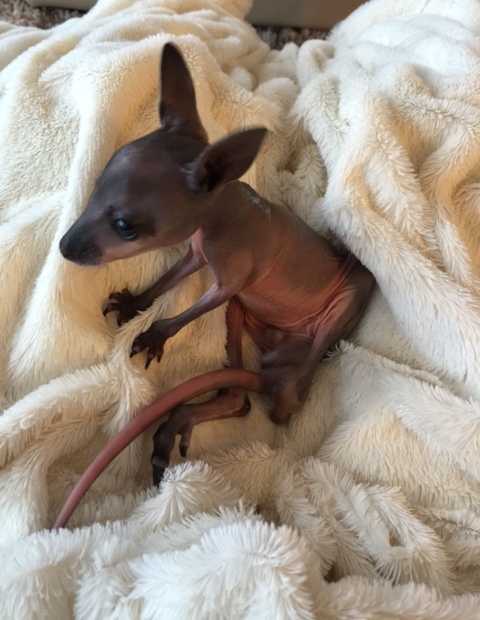
Slowly they grew - feeding every 3 hours - and they began to get light dustings of fur. Ashley and I kept in contact and compared notes on the progress of our little joeys. The babies didn’t meet, though, until they were around 1kg in size and they have been inseparable ever since.
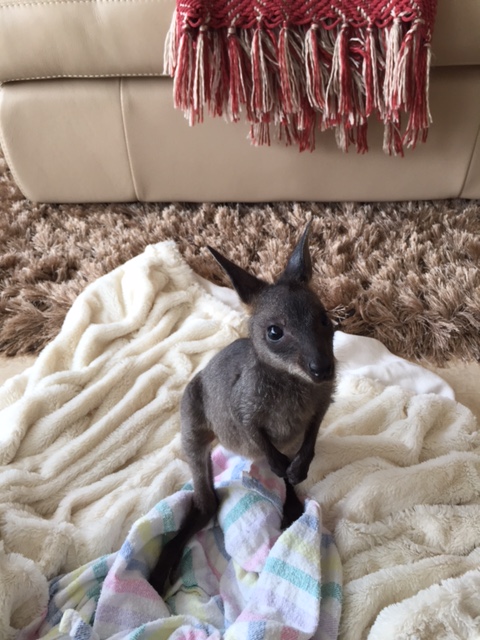
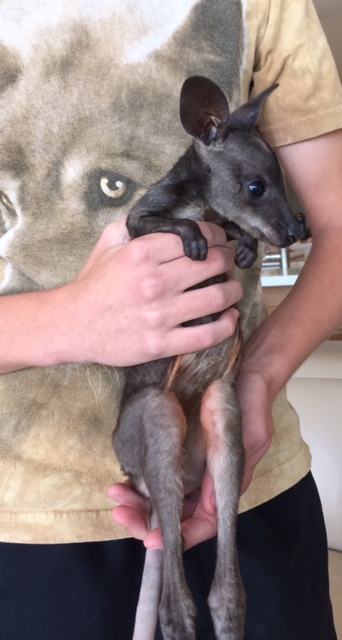
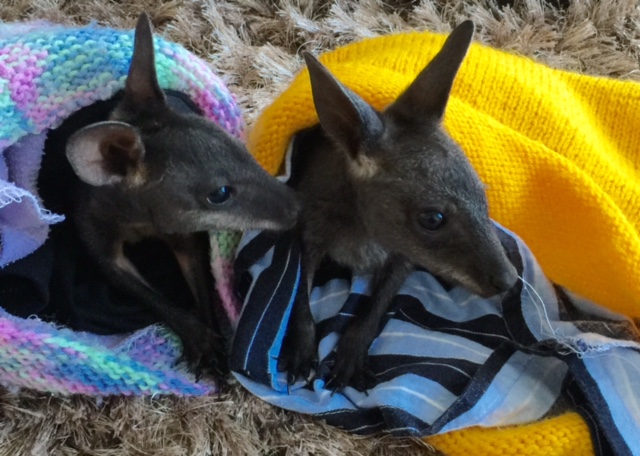
Their first play-date.
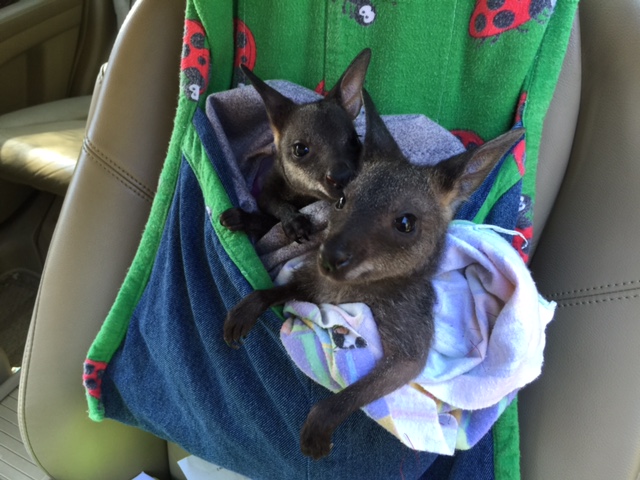
Travelling companions.
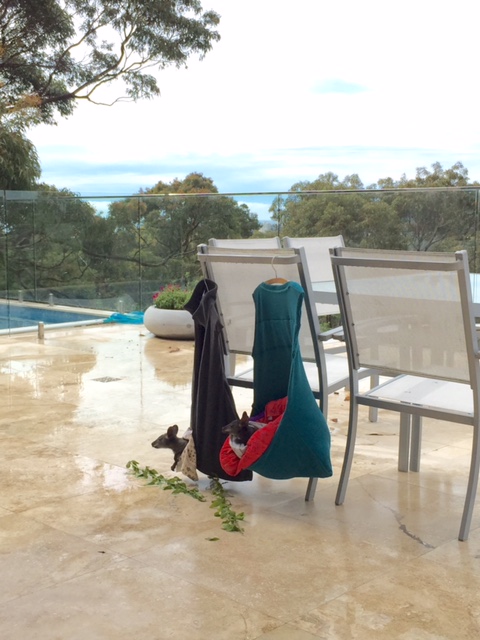
Just ‘hanging’ together.
The joeys are currently at the ‘toddler’ phase of their development. They are emerging from their artificial pouches at will and are sampling different types of grasses and foliage and are still on 4 and 5-hourly milk feeds respectively. When they are older, they will be transferred to Sydney Wildlife’s Rehabilitation and Pre-release Facility where they will begin the process of ‘dehumanisation’. As they will be released back to the wild, they will need to learn not to depend on humans for their needs. At the Pre-release Facility, they will be in a bushy area where they will learn to browse, contend with all types of weather, learn different types of bush smells and figure out how best to deal with parasites like flies, ticks and leeches. They do all this in a controlled environment away from human dangers and predators.
We are thoroughly enjoying these joeys at the moment but because the goal is to have them released into the wild as nature intended, we will need to start ‘backing off’ when the time is right.
If you are one of the fortunate people on the Northern Beaches that get ‘swampies’ visiting your garden or if you see them in the National Parks - enjoy them, appreciate them, love them. They are wondrous and gentle creatures and are rare treasures of unimaginable value. One day you might just be looking at Cassius or Xena hopping off into the sunset - you never know your luck :)
If you would like to support our work, visit www.sydneywildlife.org